Free Online Marketing Tools: The $0 Marketing Stack?
Marketing is getting more and more expensive.
If you are a startup, this presents a problem. You don't have the money to spend on paid ads and marketing services, but you still need to get the word out of your product or service.
That's where free online marketing tools come in. These are tools that are either free or cost very little — usually less than $100/month — and can help you do everything from improving your social media presence to increasing website traffic to growing your email list.
You do not need to be a marketing expert to be successful online. In fact, you can start with zero dollars in your marketing budget and still get results. This series will help you build a complete marketing stack that fits your needs and budget.
The first step is choosing your channels and the tools that will help you reach them. The channels are social media, search engine optimization (SEO), email marketing and content creation (writing).
We've put together a list of the best free online marketing tools and organized them by category. This way, you can quickly find what you need and get back to work!
The $0 Marketing Stack: Free Alternatives To Paid Tools

When it comes to marketing, the most important thing is to get started. The tools you use don't matter that much — what matters is that you're taking action. The more you do, the better you will become at marketing your business.
That said, there are some tools that can make your life easier and help you get more done for less money. If you're just starting out with marketing and don't have a lot of cash, these tools will help you get started without losing your money.
FREE KEYWORD RESEARCH AND SEO TOOLS


Google Keyword Planner is a free keyword planner tool that makes it easy to find new keyword ideas for your business. It can help you discover long-tail keywords, which are the phrases people type into search engines when they're looking for something specific.
Don't be left behind in your keyword research—if you haven't used
Google's Keyword Planner to gather keyword ideas and search volume data, why not start now?
Although it primarily focuses on supporting your
PPC campaigns,
Google Ads can also help lay the groundwork for your SEO efforts.
When you type a keyword into Google Keyword Planner, it will show you:
Daily search volume for that keyword. The number of times people in the world search for that term each day.
Estimated cost per click (CPC) for the keyword. The amount advertisers typically pay to have their ads show up when people search for this term on
Google Search and
YouTube. This figure varies depending on several factors, like the advertiser's bid, the quality of your ad and other factors.
The
AdWords system automatically sets your bids based on algorithms. Still, we recommend using manual CPC bidding so that you can set them as high as possible without exceeding your budget or targeting too many impressions from low-quality clicks (i.e.,
those from bots).
The average ranking position of the top five ads is shown above an organic result when someone searches for this term on Google Search (the "SERP"). This figure shows how well an average ad performs compared to other ads in the same position.
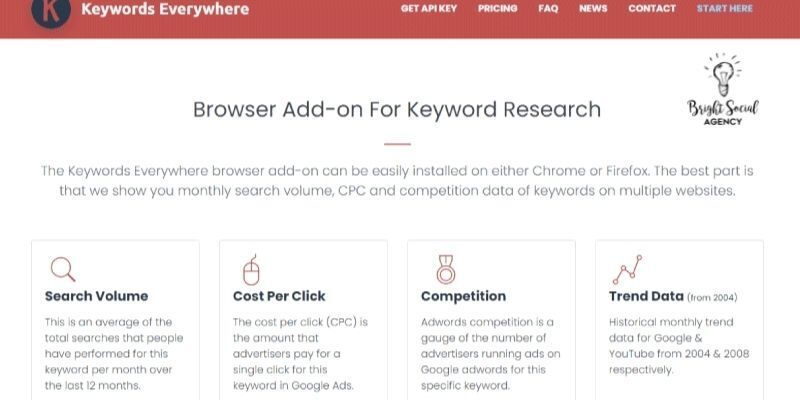
Keyword Everywhere is a Chrome extension that allows users to find and replace keywords on any web page. It's currently available for free on the Chrome Web Store.
Keyword Everywhere add-on is the first real solution to find and replace keywords on any web page. The extension works with any text editor, including browsers' built-in ones and Google Docs. It also integrates with popular online services like
Evernote, Buffer,
Hootsuite,
Feedly and many others.
The main idea behind Keyword Everywhere is to make it as easy as possible to find and replace keywords in any text using one of the most powerful search engines available today:
Google Search!
Keyword Everywhere can be used in two ways: as a bookmarklet or as an extension. As a bookmarklet, it works on all websites and most email clients. As an extension, it works only on Firefox (and other Mozilla-based browsers).
As a bookmarklet, Keyword Everywhere
adds a button to your browser's toolbar, which can be clicked anytime you want to check what words are included on the current page. As an extension, this button appears next to your address bar whenever there are words on the current page that match its keywords list (which includes hundreds of words from many languages).
3. LSIGraph

LSIGraph lets you three free searches a day to find semantically related keywords.
LSIGraph is a
semantic search engine that uses the data from Linked Data Cloud to provide better results on Google. The Linked Data Cloud is a database of semantic relationships between web pages, which can be used by LSIGraph to build its graph.
The service also allows you to add your own data to the cloud so other users can benefit from it as well. The result is that LSIGraph offers more relevant search results than Google or any other search engine out there.
LSIGraph will also provide the top 10 search results for each keyword, along with their estimated monthly search volumes and CPCs.
This is an easy and
quick solution to get some ideas for new keywords, as well as compare your existing ones against the competition.
If you are trying to rank for “digital marketing tools,” consider adding some of these unique words to your post: “definition,” “free,” “essential,” and “best.”
TIP: You can also use thesaurus.com to find words related to your topic.
4. SEMRush Free
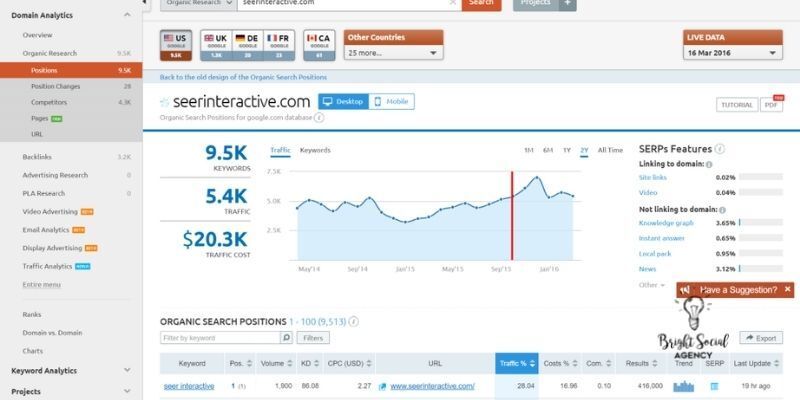
SEMRush is a versatile and powerful tool for SEO and keyword research. It allows you to find the best keywords for your website, track the results of your SEO efforts and discover new ideas for content marketing. The free version of the tool provides a lot of functionality, but it has limits.
SEMRush's free version is perfect for newbie marketers who are trying to learn all the ins and outs of SEM and PPC. The free version allows users to conduct 10 searches a day and provides keyword monthly search volumes, position rankings, domain overviews and more.
You can also track keyword rankings, SEO ideas and more by setting up one "project" for a specified domain. Although you can't get in-depth information with a free
SEMRush account, it's a great tool for beginners.
If you have access to such data, it can be found in
Google Analytics when connected with Google Search Console.
5. WordClouds

WordClouds is a useful tool for visualizing and exploring the frequency of words in a text. WordClouds are particularly useful for visualizing social media data, such as Tweets or Facebook posts.
WordClouds allows us to look at word frequency across multiple texts and compare them with each other. They also provide a way to visualize how the frequency of words changes over time or how it compares between different texts.
WordClouds can be created using software such as
Gephi, which provides the ability to import text into the software from many different sources (e.g.,
Twitter feeds).
You can use WordClouds to visualize any data where you are interested in the relative frequency or importance of words in your data.
6. Copyscape
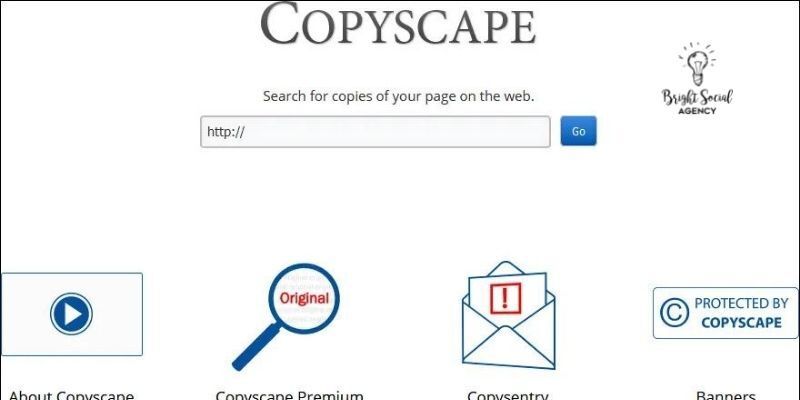
Copyscape is a plagiarism checking tool that searches the internet to see if your content has been copied and pasted elsewhere. It will also show you where that content was found, so you can contact the offending website to have it removed.
Copyscape is free for personal use only and costs
$0.99 per month for business use. The free version of Copyscape lets you download up to 100 results at once, which should be enough for most people. If you need more, you can pay for an upgraded account with more features or simply purchase access to their API from their website.
When you use Copyscape, you can enter any URL, and the tool will search for that piece of content on the internet. If it finds that someone has copied and pasted your work, it will alert you and show you where it was found. This can be very helpful for finding out who is stealing from you or your clients, as well as for finding new audience members who may be interested in what you have to say.
7. Google Mobile-friendly Testing Tool

Google's Mobile-Friendly Test lets you see if your page is mobile-friendly. It checks for common errors that make pages hard to use on mobile devices and shows you how to fix them.
It includes a
checklist of mobile usability
best practices and an action plan to help you fix any problems.
The tool gives you a score between
0
and
100 based on how well your site conforms to these best practices, which we'll call your "Mobile Friendliness Score". A higher score means that your site is more mobile-friendly.
The results page also shows how many of your pages require changes to become fully mobile-friendly.
8. Schema Markup Generator
Schema Markup Generator is a free, easy-to-use tool that helps you generate the code you need to add schema markup to your website. It's a simple, one-page tool that will work with any website, whether it's built on WordPress or not.
The generator lets you choose between two types of markup:
- Rich snippets (also known as structured data) are search engine optimization (SEO) tools that help your website appear in search results with more information about itself. Rich snippets are generated by a special type of HTML code called schema markup. The Schema Markup Generator can help you generate the code needed to add rich snippets to your website.
- Structured data is another type of HTML code that allows websites to provide more information about themselves without relying on third-party services like Google Search Console or Facebook Open Graph. Structured data uses specific codes called microdata to convey meaning about individual elements on a page; for example, if an product has a "price" attribute, it will be possible for search engines to retrieve and display this information when showing the item in search results. The Schema Markup Generator can help you generate the code needed for adding structured data to your website.
9. Screaming Frog
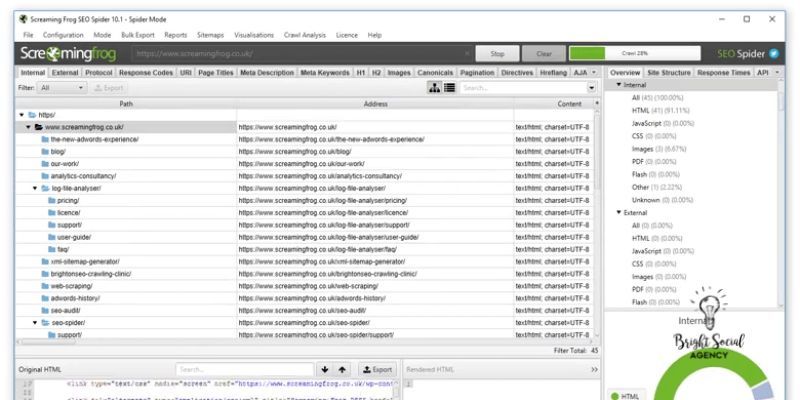
Screaming Frog is a desktop application that enables users to crawl websites and produce a report of all page elements. As such, it is used by SEOs to uncover broken links, duplicate content, and many other issues related to website structure.
It can be used for data mining or any other purpose where crawling and analyzing websites is required.
Screaming Frog’s SEO Spider is a powerful site crawling tool, able to crawl both small and very large sites efficiently while allowing you to analyze the results in real-time.
The SEO Spider has an intuitive interface that makes it easy for anyone to use: just enter the URL of your website and start crawling! Screaming Frog will then fetch all pages from your site, parse them using its proprietary parser (based on
Apache Tika) and store all discovered elements in an SQL database
for later analysis.
The resulting data can be exported as CSV files or viewed directly in the interface: you can sort by status (for example, “404 –
Not Found”), type (for example “,
Image”), size or
external links, filter by hostname or
path, and view detailed information on each element.
10. Open Site Explorer

Open Site Explorer is a free site explorer tool that lets you search for links pointing to any website and also analyze inbound and outbound links.
It can also help you find new link opportunities, find out who's linking to your competitors, and discover the keywords that your competitors rank for.
Using Open Site Explorer is easy. Just enter the URL of any website you'd like to analyze into the search bar and click "Check." You will be given a list of all the pages on that site, along with their social shares, links, and more!
Open Site Explorer also has some great features that are not available on other free tools such as MajesticSEO. It allows you to run backlink history reports and export link data in multiple formats (CSV, JSON, PDF).
The downside is that this tool does not provide a lot of information about each individual backlink as
MajesticSEO does. However, if you're looking for a simple way to track how many links you have pointing at your website, then Open Site Explorer will do just fine.
FREE CONTENT PLANNING TOOLS

1. AnswerThePublic
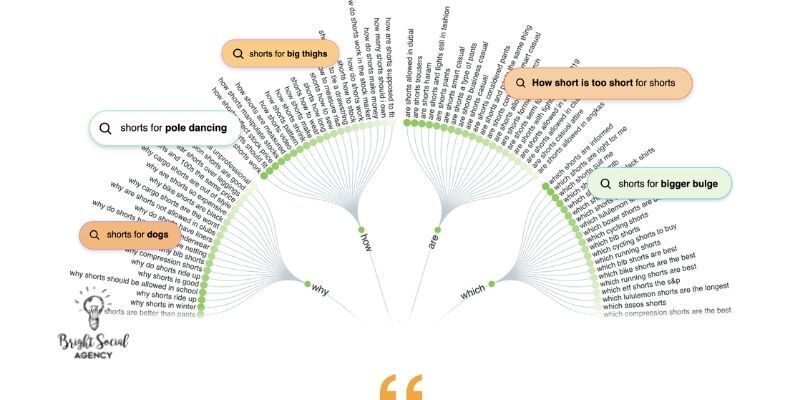
AnswerThePublic is a free tool that makes it easy to create content that answers your visitors' questions.
AnswerThePublic can help you write better copy, optimize your PPC campaigns, and improve your SEO performance.
With AnswerThePublic, you can type any phrases, and this tool will return different content questions and topics people are searching for. You can search for specific titles or keywords using a variety of filters, including location, device, time of day and more.
You can then use the information from these searches to create
blog posts, emails or other forms of content
that answer common questions about your business or industry.
For example, if you type in "what is the best food for dogs," AnswerThePublic will return results that include other questions people have asked about dogs and what they feed them.
The results are organized into categories based on different topics: animals, health, science, sports and so on. If you click through one of these categories, you can see more related questions.
You can also use AnswerThePublic to find topics for your blog posts or articles by typing in phrases like "how-to" or "top 10" and getting back results based on those keywords — which should give you some ideas for what people are searching online and what they want to know more about.
2. BuzzSumo
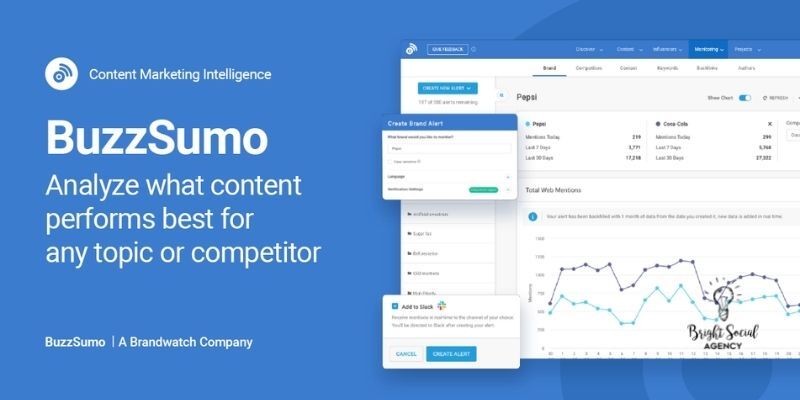
BuzzSumo is a powerful marketing tool for content marketers. It helps you find the most shared content on social media, but it also allows you to analyze the most shared content in any niche. This is useful because it shows you what people are currently interested in and what type of content they like to share.
The best way to use BuzzSumo is by searching for a specific keyword or phrase. Once you've found what people are talking about, you can use this information to create your own pieces of content and share them on social media.
If you're looking to grow your blog or business, this tool will help you discover what people want from their favorite
brands
and
influencers.
With BuzzSumo, you can:
- Find the most trending content in your market.
- Find out what types of headlines work best for each social network.
- See which sites link to your competitors' content, so you can reach out to them or write similar articles.
- Find influencers in any industry who share similar content with their audience.
The free version of BuzzSumo provides only limited access to the company's content analyzer, trends, and influencer bio search functions.
Update: BuzzSumo no longer offers a free version, but you can try the service with a free 7-day trial.
3. Google Trends
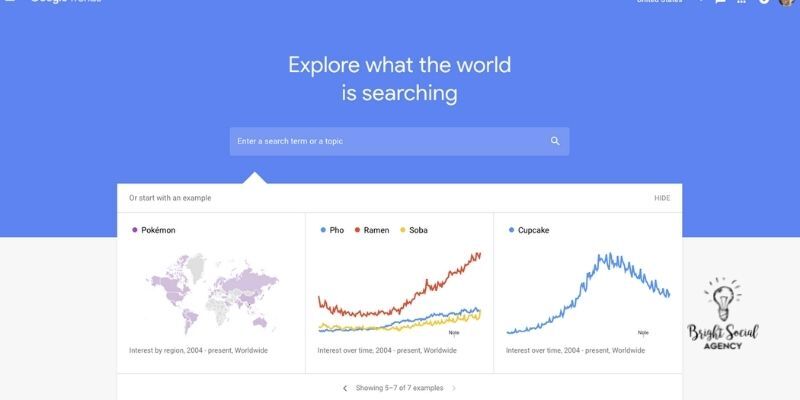
Google Trends is a tool that lets you see how often a particular search term has been entered relative to the total search volume across various regions of the world and in different languages. This can be useful for tracking the popularity of certain keywords over time or for comparing the relative popularity of different phrases.
You can use Google Trends to
identify popular topics, track the volume of search activity for specific keywords and phrases, and monitor how search terms are changing over time.
The tool was first
introduced in 2006, but it has evolved since then to include more data points, such as search volume by region and country, as well as by language. It can also be used to find related terms that are closely related to your search term.
It can also help you discover new content ideas for your website or blog or even find new keywords for your marketing campaigns.
To start using Google Trends, just type a query into the search box above and see what comes up. The results will show you how often people have searched for that term over time, as well as related queries that may be useful for your research.
4. Google Scholar

Google Scholar is a free tool that indexes the full text or metadata of scholarly literature across an array of publishing disciplines. The Google Scholar algorithm processes information extracted from the indexed data, which is then displayed in a user-friendly format.
Google Scholar does not provide access to a particular publisher's material or prohibit access to any publisher's content and does not host any of the indexed material itself. The indexing and abstracts are provided by a number of sources, including publishers and institutions who pay for inclusion in the database.
The Google Scholar index is built on hyperlinks rather than traditional citation indices, based on bibliographic information found on the pages of publications. It was first introduced in
2004
as part of Google Labs
and has received significant updates since then. In order to create the index,
Googlebot
reads through text in all documents it encounters while searching for links to other resources, e.g., web pages that are likely relevant to your query (see example).
Google Scholar allows users to search for information from a variety of publications, including
peer-reviewed scientific journals, conference proceedings,
technical reports,
preprints,
newspaper articles,
patents,
historical publications such as newspapers or books, and
legal cases cited in secondary literature like law review articles; and others.
The main features include
- Searching for more words at once (e.g., "Truman" and "nuclear").
- Full-text searching for all articles in any journal (and not just those indexed by PubMed).
- The ability to compile citations from multiple sources into a single bibliography.
FREE CONTENT MARKETING TOOLS (OPTIMIZATION AND EDITING)

1. Grammarly

Grammarly, the online grammar checker, has announced a new feature that will allow users to correct mistakes in their writing with a single click.
The web-based tool has been available for several years now, but the new instant feedback feature will help writers save time by providing immediate corrections as they type. For example, if a user writes "I'm going to the store," Grammarly will alert them that "to" is incorrect and recommend they replace it with "toward."
The new feature is in the beta testing phase but should be available to all users soon. It's just one of many upgrades Grammarly has made since being acquired by social media management platform
Hootsuite last year.
Grammarly's advanced grammar checking engine analyzes text in more than 250 languages to detect errors such as
subject-verb agreement, verb tense consistency, article use, and wordy phrases.
The app highlights any possible mistakes with your writing and suggests corrections so that you can fix them on the go. The premium version of the app checks for plagiarism.
2. Hemingway
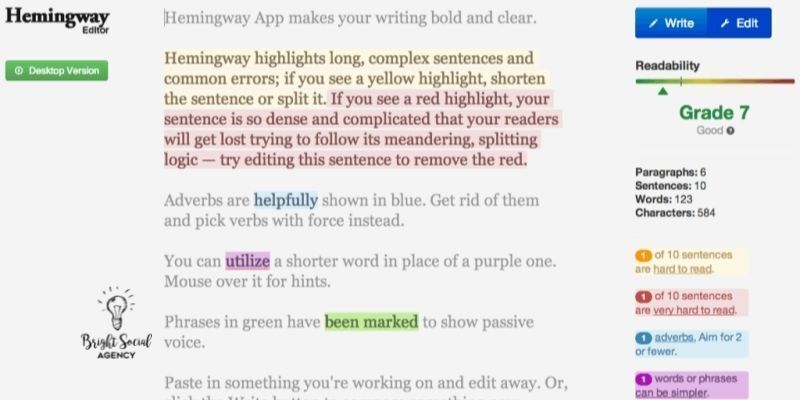
Hemingway app is a tool for writers to make their work more concise. It highlights unnecessary words and uses a color-coded system to show how many words are unnecessary. If a writer has written too much, the app will let them know and make suggestions for how to cut down on their word count.
It also tracks how many times people use certain words in their writing. For example, if you use the word "I" too often, the app will highlight it for them in red and tell them how many times they've used it. This can help writers
improve their story by ensuring they're not repeating themselves
or using too many words that aren't needed to get their point across.
3. Yoast Real-time Content Analysis

Yoast Real-time Content Analysis is a powerful plugin that helps you to analyze the content of your website. This tool is easy to use and fast.
With this plugin, you can analyze your content in real-time, which means you can see how your content performs as soon as it's published. You can also see how it will perform on social media platforms like
Facebook, Twitter, Instagram, and more.
You can also use Yoast Real-time Content Analysis to create SEO-friendly titles and meta descriptions for your pages. The plugin will analyze your content and tell you whether or not it's good enough for social media platforms or search engines. If it isn't good enough, then the plugin will help you fix it, so it meets their criteria.
Yoast helps you optimize the
readability and SEO of your content, giving all content a color score of green (good), yellow (meh), or red (bad) based on these factors.
4. Word2CleanHTML

If you are searching for a quick way to convert your documents into HTML, then Word2CleanHTML can be the right solution.
It is a tool that will allow you to
convert Microsoft Word files into clean and well-formatted HTML files. This software is easy to use and can be used by anyone with basic computer knowledge.
It converts any document that is created in Microsoft Word 97 or later versions, including Word
2000, XP, 2003, 2007, 2010, and 2013. The output format of this tool is clean and
well-formatted HTML code that can be easily edited and updated by anyone who knows how to code web pages.
The software also allows users to create hyperlinks in their documents which makes it easier for them to navigate through different sections of their documents without having to scroll down through long pages of text or search for specific information on their computers or mobile devices.
Word2CleanHTML comes with advanced features such as
spell-checking options and
customizable styles, which makes it easier for users to create professional-looking documents with little effort on their part.
5. Headline Swipe Files

A headline swipe file is an important tool for any writer who wants to make their content more compelling and appealing to readers.
A headline swipe file can help you improve your CTRs and make your content more engaging.
6. Diffchecker
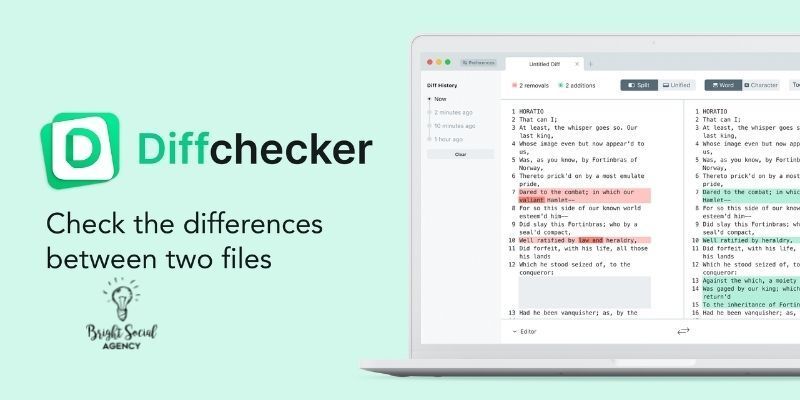
Diffchecker is a tool for comparing and finding the differences between files.
If a file has been modified since its last update, Diffchecker will highlight and show you exactly what's changed.
7. Coschedule Headline Analyzer

This tool analyzes your headline and grades it on a scale of 0 to 100. Factors such as word balance, length, keywords, readability, and sentence structure are all considered.
8. Hubspot Blog Ideas Generator

The Hubspot Blog Ideas Generator is an online tool that helps you generate blog topics based on your current level of expertise. This tool will ask you few questions and generate a list of blog ideas matching your answers. This is a great way to find new topics and ensure you always write about what you know best.
The
Hubspot Blog Ideas Generator asks questions about:
- Your industry -What are the problems and pain points of your industry? How can you help people in that industry solve their problems?
- Your company -What does your company do? Who does it serve? What makes it unique?
- Your target audience -Who are you trying to reach with your content? What types of people are interested in what you have to say?
9. CharacterCountOnline

CharacterCountOnline is a free online tool that allows you to count the number of characters in your text.
CharacterCountOnline has been designed to be used by everyone: it is simple, fast and easy to use. Copy and paste your content into the box and click the "Count" button.
CharacterCountOnline will automatically count the total number of characters and words in your text.
CharacterCountOnline provides you with a free text counter for your
blog posts, articles
and other types of textual content. You can use our tool to determine how many characters your post contains. This will help you to avoid exceeding the maximum character count on Facebook or Twitter. The tool's character counter also makes it easier to find out if your post has been plagiarized or not.
FREE PAID SEARCH TOOLS

1. Google Ads Editor
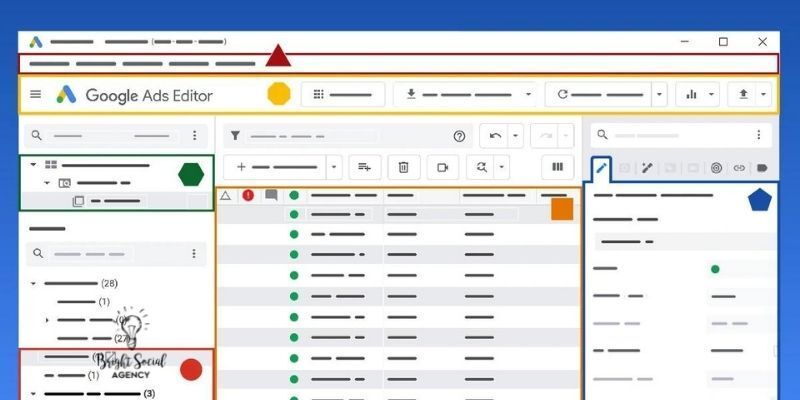
Google Ads Editor is a online tool by Google that helps you make changes to your AdWords ads, including adding and editing text, images, and video. You can use this tool to upload multiple versions of an ad to run against different variations of your keywords.
The Google Ads Editor offers a number of features, including:
- A dashboard to review your cost-per-click (CPC) and cost-per-thousand-impressions (CPM) data.
- A keyword selector to target specific search queries.
- The ability to create, edit, and delete ad groups and ads within those ad groups.
- In the next section, we'll go over some of the most common uses for Google Ads Editor.
It is a user-friendly tool that will save you time when creating larger, more complex campaigns. It also catches any technical errors, meaning you won't have to go back and tweak your work.
2. Microsoft Advertising Editor (Previously Bing Ads Editor)
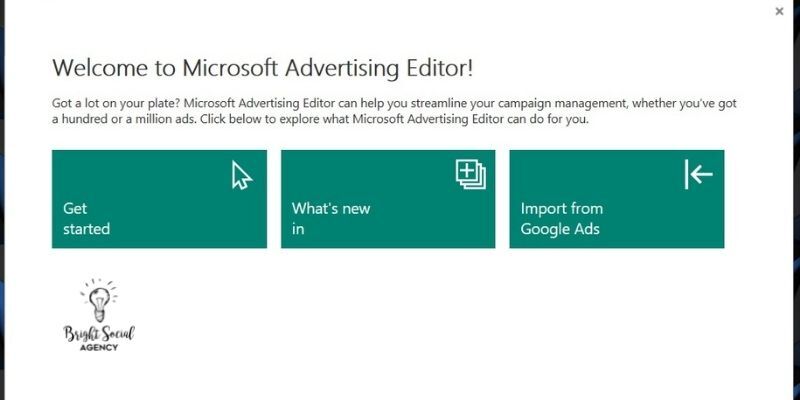
Microsoft Advertising Editor is a powerful tool that makes it easy to manage your Ads campaigns. It lets you build and optimize campaigns, as well as test and experiment with different versions of ads, keywords, and bids.
With Microsoft Advertising Editor, you can also manage your budgets, set up conversion tracking for all ad groups in your account, and easily add negative keywords to help control which searches trigger ads on Bing.
3. Google Ads Scripts

Google Ads Scripts is a tool that lets you automate the process of creating, managing, and optimizing campaigns in AdWords. It's designed to help you save time and gain insights into how your campaigns are performing.
You can write scripts to perform any task that can be done manually in AdWords.
With Google Ads Scripts, you can change multiple campaigns at once, programmatically create ad groups and keywords based on rules you specify, update bids for entire accounts at once, and much more!
You can use Google Ads Scripts to:
- Automate account management tasks, such as creating and editing campaigns, ad groups, and keywords.
- Automate your bidding strategy by customizing bids based on your goals and performance.
- Automate multi-step workflows such as importing data from third-party platforms into Google Ads.
4. Karooya Expanded Text Ad Preview Tool
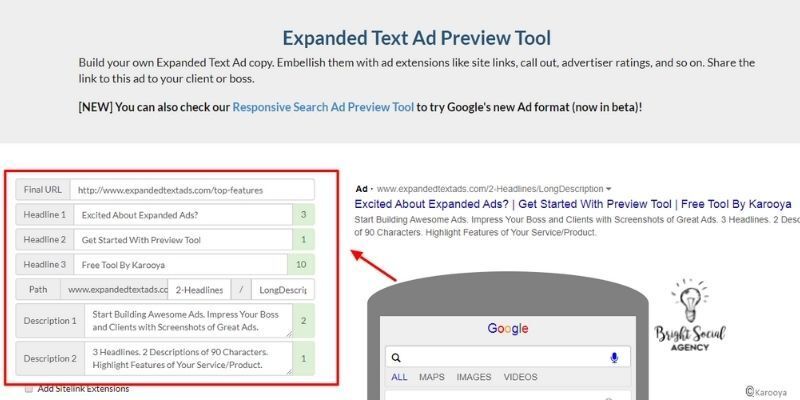
Karooya's Expanded Text Ad Preview Tool is a must-have for anyone looking to create beautiful and engaging ads without having to guess how they'll look.
With this tool, you can create ads in your browser and see them right away. You can also edit them and see how the changes impact your ad's appearance and performance.
You can even use our tool to get an idea of what your ads would look like on different devices!
This tool allows you to
easily show clients how an expanded text ad will look on Google.
FREE COMPETITIVE STRATEGY AND AUDIENCE RESEARCH TOOLS

1. SimilarWeb

The SimilarWeb mobile app is a tool that helps you find apps, websites and services that are your competitors. It's especially useful if you're looking for alternatives to your favorite apps or want to see what companies or brands are out there in the world of mobile apps.
SimilarWeb can also be used as a research tool to help you discover new content or products that fit your needs. You can use it to find out which sites are popular with people who share your interests, which apps are most frequently downloaded by those who have similar demographics, or which services are more often used by people in cities near yours.
This tool will provide an in-depth analysis of your competitors' organic and paid search performance and a view into their
mobile usability
and
audience demographics. We also show you which keywords they're ranking for in search engines like Google, Bing and Yahoo!, so you can get a better idea of what's working for them—and take inspiration from their success!
With SimilarWeb's analytics platform, you can quickly determine whether or not a competitor is performing well based on their
Alexa ranking, number of backlinks from other websites
and social media activity levels (such as
Facebook likes).
The pro plan gives you unlimited results per metric, but the free plan only gives you five. In most cases, that's all you need. However, if you're facing a large volume of data, the pro plan could be a necessity.
This tool can also be used for link building and to ensure you are not contacting link farms or private blog networks (PBNs). You can identify these sites by looking at their
direct/referral traffic, monthly visits, the average duration of visits and bounce rate.
2. Mozbar
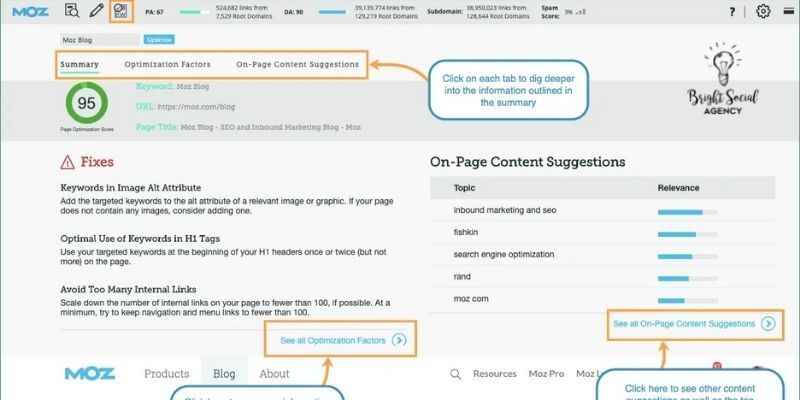
Mozbar is a browser add-on that provides a complete summary of your search engine optimization metrics. This tool shows you how many links you have, your domain authority, where your traffic is coming from, and more.
Once the page is in the index, you can see additional items such as title, description and link metrics. You can also see various markups on the page such as schema or Twitter cards.
Moz offers a number of free tools that can help you with your SEO campaign, including the
Link Explorer and their Online Presence Checker (for
local SEO).
4. Google Alerts
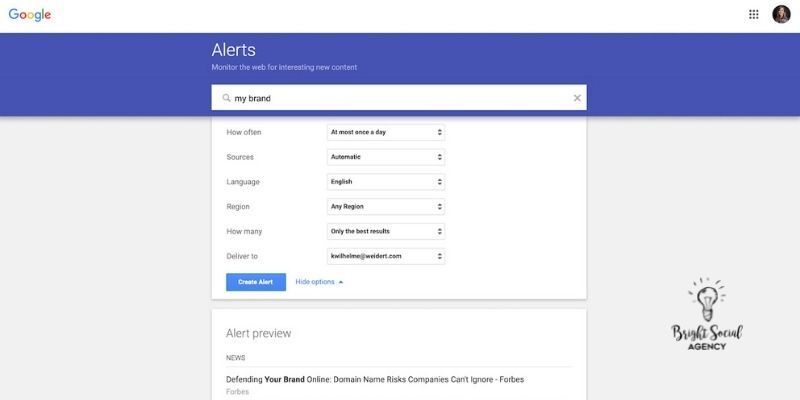
Google Alerts is an online tool that lets you get notified whenever Google finds new matches for the words or phrases you care about. It's great for staying up-to-date with trends and news, finding important content you might have missed, and tracking competitors. You can also assign alerts for specific terms or phrases or just receive a digest of everything Google has found.
You can install this tool to
monitor different content with a specific keyword or phrase. This is an excellent way to track what people say about your business and its competitors.
4. SurveyMonkey

SurveyMonkey is a leading online survey platform, empowering companies to collect high-quality feedback to make better business decisions.
The tool makes it easy to create surveys and analyze responses, giving you the power to see your organization's strengths and weaknesses.
Millions of people use SurveyMonkey's tools in more than
200 countries, including many of the world's largest
companies, universities and non-profits. Users praise this tool for its ease of use and powerful features.
Use SurveyMonkey today to
get your insights to make better business decisions.
SurveyMonkey's reporting tools are also great for keeping track of responses: You can filter by demographic information such as gender or age group; see responses by the question;
compare answers across subgroups (for example,
male vs female respondents); and more.
FREE WEBSITE AUDIT AND SITE OPTIMIZATION TOOLS

1. Hubspot’s Website Grader
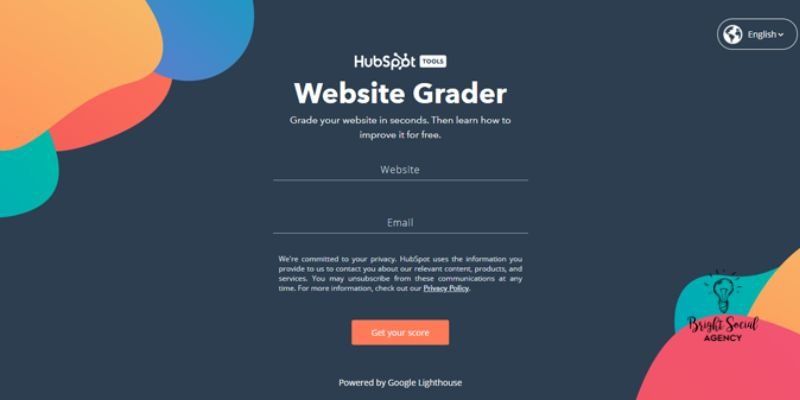
The Hubspot Website Grader is an online tool by Hubspot that helps you identify and fix the issues that could be holding your website back from being as effective as it could be.
It’s an easy way to identify and fix common problems like duplicate content, broken links, and more. It also provides an overview of how well optimized your site is in terms of mobile usability, performance, and other key metrics.
The tool will grade your website on a scale of 1-100 for each of the categories listed below:
- Performance (how quickly does my site load?)
- Mobile Usability (is my site mobile-friendly?)
- Security (are there security vulnerabilities?)
- Duplicate Content (do I have too much duplicate content?)
Website Grader is available as an app or via a web browser. The app can be downloaded from either the App Store or Google Play. It's easy to use: just type in the address of your website and hit "Check." The app will analyze the site, give it a
score out of 100
and offer suggestions for improving each category.
The tool isn't limited to businesses; it can also help individuals learn more about their own websites and what they can do to improve them!
2. Built With
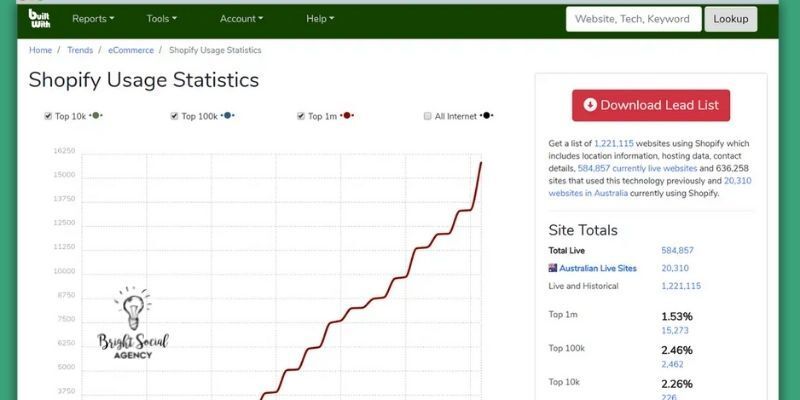
Built With gives you information about the websites you visit and the technologies used to build them. It tells you how sites are built, what kind of tools they use, and who else uses those tools.
This information is useful for anyone who wants to understand more about the web and how it works. Just enter your website URL, and Built With will tell you which tools power your site and where they come from. You can browse by technology category or company name, so get started now!
There is a
Google Chrome extension that enables you to check which
technologies
are used on a web page without having to go to Built With and type in the domain.
3. Archive.org

Archive.org is a nonprofit digital library that offers permanent access to collections of digitized materials, including websites, software applications/games, music, movies, moving images and millions of public domain books. The site's mission is to offer "universal access to all knowledge" by providing free digital content through its online portal.
This resource can
help you look back at old versions of a website
to see how it has changed over time.
4. Screaming Frog

Screaming Frog is a desktop tool for website auditing, crawling, and analysis.
The software can check that a site is configured correctly, verify that links are working, and test different search queries on any page. It can also be used to
audit websites for broken links, poor performance and duplicate content.
The first thing that you have to do is import your website into Screaming Frog. You can do this by using their
.csv importer or by uploading a
.zip file of your site. Once this has been done, you can also run various searches within the software to find the errors and problems on your site.
When running a crawl on a site with
500 pages, Screaming Frog will go through each page individually and check whether it exists or not. It then looks at any links on that page and follows them through until they reach another page on the website or come up against an error (such as an internal server error). This process can take a bit of time depending on how big your website is, but it gives you a good idea of what issues exist concerning broken links, missing images etc.
5. Google Analytics
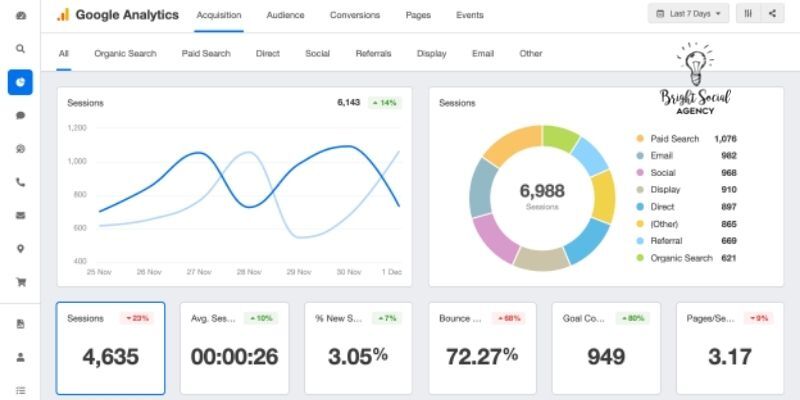
Google Analytics is a free web analytics service offered by Google that tracks and reports website traffic.
It provides detailed statistics about the visitors to the site, which in turn can be used to improve your site's performance.
Google Analytics is one of the most widely used website statistics services. It offers a
wide range of reports and tools that can be used to evaluate your
website's performance, monitor traffic sources, track conversions and improve user experience.
The main features of Google Analytics are:
- Real-time statistics.
- Tracking of individual visitors and their actions.
- Detection of system errors to avoid them in the future.
- Tracking page views, sessions, path analysis, visitor loyalty and conversion rates.
- A/B testing, funnel analysis and reporting for mobile applications.
6. Google Search Console
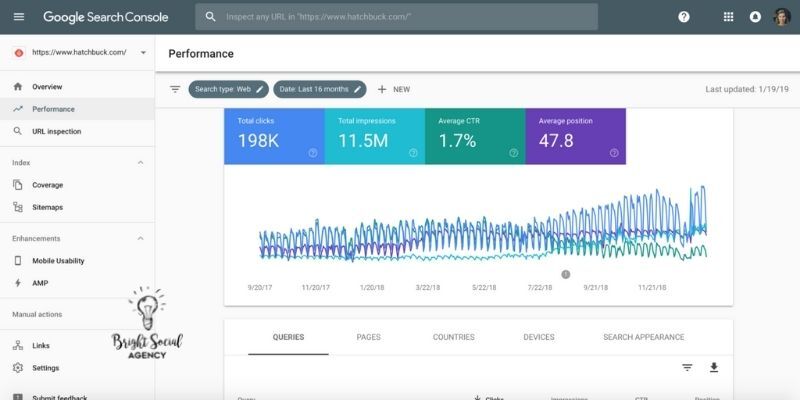
Google Search Console is an online tool from Google that allows you to see how your site appears in Google Search results.
You can use the data from Google Search Console to
improve your site's performance
in organic search results by identifying content that might be relevant to queries people enter into Google. This is relatively straightforward if you know what you're looking for, but finding what you don't know about takes a bit more effort.
Two main things can help you uncover potential areas of improvement:
- Crawl errors: You can see a list of issues on your site that may affect the way it appears in search results (e.g., pages not loading properly)
- Search Analytics: A tool that provides detailed information about the visitors who come to your site from Google Search
It also gives you insights into how you can improve your presence, so you can maximize visibility and traffic.
7. Google Tag Manager
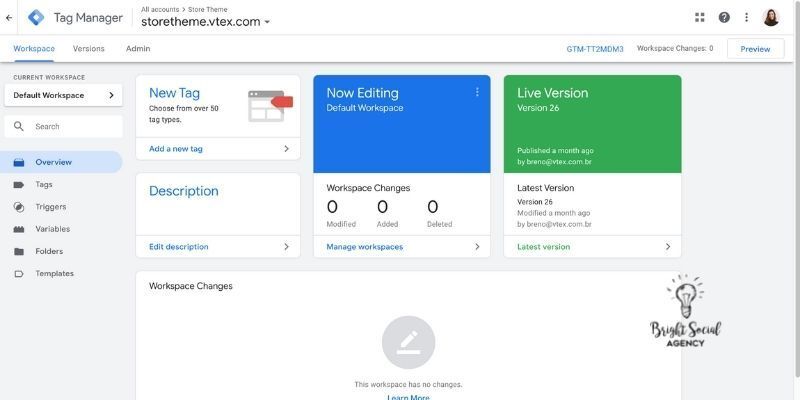
Google Tag Manager is a free, easy-to-use tag management system that allows you to set up, manage and report the tags and codes on your website.
Google Tag Manager manages the
code snippets (or "tags") placed on your website by third-party vendors such as
Google Analytics, Facebook or Twitter. The Google Tag Manager code tells the vendor which of your pages or events you want to track.
Google Tag Manager does not collect web page data; instead, it manages the deployment of data collection scripts or tags provided by outside vendors such as Google Analytics.
This approach has many benefits:
- It's easy to test new tag ideas without affecting your live site because the script does not load until after you've tried it.
- You can change tag configurations without going back into code (although some customizations may require coding).
- You can manage multiple sites from one interface by using templates or workflows.
Google Tag Manager can be used with
Google Analytics, AdWords, DoubleClick and other services from the
Google Marketing Platform.
8. Optimize Google
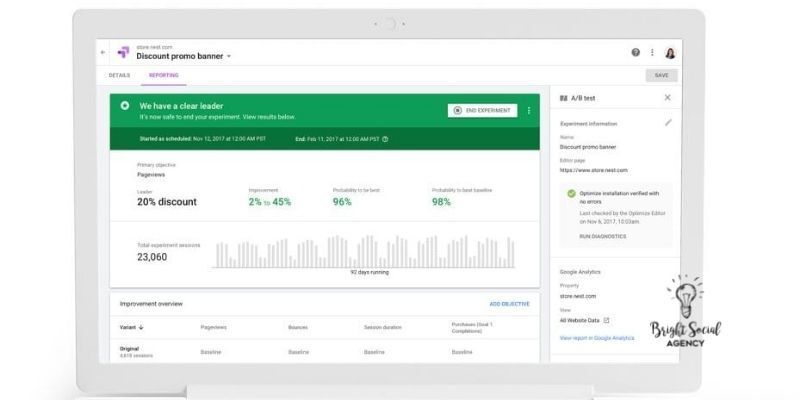
Optimize Google is another Google tool that makes it simple to A/B test different items on your site (CTAs, headlines, layout of content).
The Optimize app is available on the
Google Play Store and the
App Store. You can also use the Optimize website to run experiments and collect data.
Optimize Google allows you to set up an experiment between two versions of your website
using different headlines or photos. Once you have set up an investigation, you can send traffic from Facebook Ads Manager or AdWords campaigns to those pages to
start collecting data
about which version performs better.
Once you have collected enough information from your experiment, Optimize will show you which
version performed better and suggest what changes you can make on your website based on this information.
Optimize Google is also a great way to see
what works best on your website
without hiring someone or paying a lot of money. The only downside is that Optimize Google doesn't have as many options as other tools, such as
VWO or Optimizely, but it's still worth considering if you don't have time or money for those options.
9. Urlcheckr

Urlcheckr is a tool that analyzes the content of a web page and provides you with an in-depth report on that page. The report includes information about the page's number of images, links, and other elements.
The tool is useful for both webmasters and SEOs. It can help you identify broken links or missing elements on your website (e.g., images or videos). It can be used to verify whether your site has duplicate content or not.
There are many reasons why you would want to use Urlcheckr:
- To find out if a website is down or offline
- To check if a website is registered with Google Analytics
- To check if a website has been hacked recently
The software will allow you to get information about your backlinks, including the anchor text, the URL and more. You can also check the
anchor text distribution of your backlinks and their quality. The software also allows you to compare two websites and determine which one has more quality backlinks than the other.
10. Redirect Path
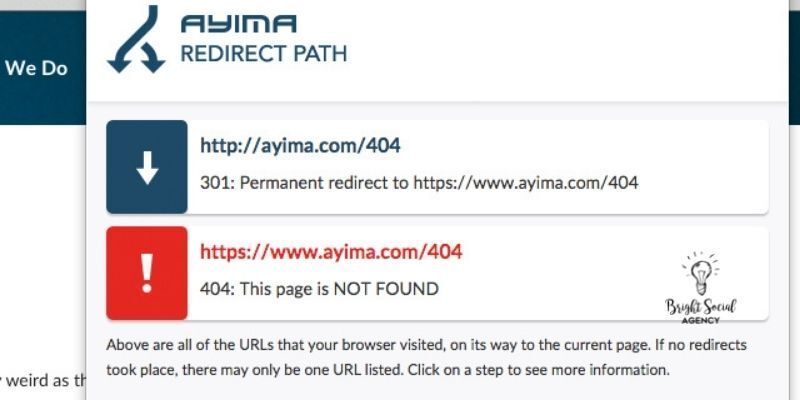
Redirect Path is a free, useful SEO tool that helps you find the most effective redirect paths for 301 redirects. It also makes it easy to track and manage your redirects.
Redirect Path has two main features:
- Redirect Path Builder — Enter a URL from a website and Redirect Path will generate all possible 301 redirect results. You can then click on any of these results to see where they lead (or don't).
- Redirect Checker — Enter a URL from a website and Redirect Path will check whether there are any existing 301 or 302 redirects on the page, including any duplicate entries in the list of URLs being redirected (this can often be an issue with WordPress themes).
Redirect Path also lets you see how long it takes for each redirect on a page and which server handles that redirect. The speed of your website can greatly affect user experience, so it's good to know where your speed comes from and how fast it really is.
11. Siteliner

Siteliner is a simple yet powerful tool that helps you optimize the performance of your website.
It allows you to quickly scan and analyze your website for all kinds of issues, such as
broken links, duplicate content, missing tags, images with no alt text or titles, etc.
You'll also find out how fast your site loads from various locations worldwide and on different devices (desktop/mobile).
The
Pro version also provides many other features that make it easy for you to optimize the performance of your site.
Siteliner enables you to create sitemap files in various formats, including
HTML and XML.
The software is free, but you can choose to purchase a license and additional access features such as
adding links.
FREE PAGE SPEED TOOLS

1. Pingdom
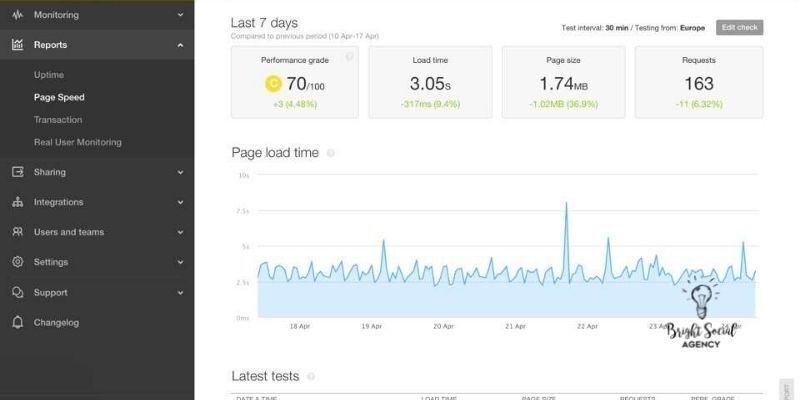
Pingdom is an online tool where you can test the speed of your website. It will tell you how fast your website loads, how many errors it has, and how many resources it uses.
Pingdom is a free service that provides webmasters with detailed information about the performance of their websites. Pingdom offers both
free and paid plans, with the free plan allowing you to run up to 10 tests per month. You can also use Pingdom for free with no sign-up required if you just want to see how your website performs against other sites.
Pingdom provides two different kinds of speed tests: a simple page load test and an advanced test that measures page load times in real-world conditions."
You can see how many users are using your website at any given time by using
Pingdom's Live Traffic feature. This is especially useful for e-commerce sites where you need to know how many people are visiting your site at any given time so that you can make sure that everything runs smoothly (and so that you don't run out of stock!).
The free version of Pingdom will let you see the
average load time of websites in general (based on their own database of over 1 million sites), and it will also give you an idea about how fast other websites are compared to yours (using their own database).
2. Google PageSpeed Insights
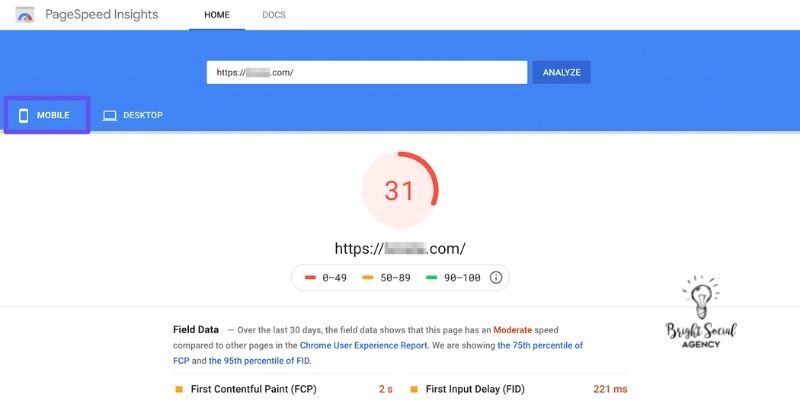
Google PageSpeed Insights is an online tool that helps you make your website faster. It looks at how fast your site is loading to users and gives you recommendations to help speed up your site's performance.
Google PageSpeed Insights also gives you a score (out of 100) on your site's performance. As your score improves, so does the user experience on your site.
The tool can be accessed via the Google Developers Console or the Google Search Console.
The recommendations are grouped into four categories:
- Speed - Improve page load speed
- Best Practices - Follow web best practices
- Layout - Improve rendering performance
- Content Delivery - Optimize content delivery
FREE LINK BUILDING TOOLS

1. LinkClump
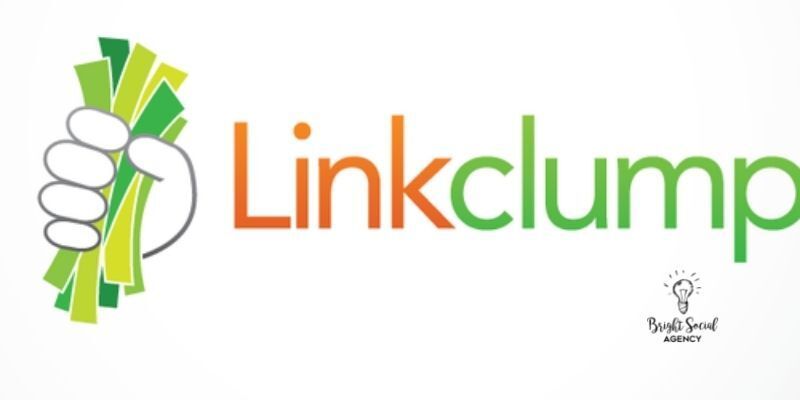
LinkClump is a simple tool that lets you quickly create and share links to your web pages.
LinkClump is designed to help you save time and be more productive by reducing the need to manually copy and paste links from one application to another. With LinkClump, you can quickly create and share links with just a few clicks of your mouse.
LinkClump is
free to download, easy to use, and works on both Mac OS X and Windows XP/Vista/7/8/10 platforms.
LinkClump makes it easy to organize your web browsing into a folder structure that makes sense to you. The tool has built-in support for tagging and searching, so you can easily find the sites you want to keep track of.
It has various features that make it very useful for any SEO campaign:
- Keyword research
- Content ideas
- Competitor research (to see what they are doing)
- Site audits (especially useful for finding broken links)
2. Check My Links

Check My Links is an online Chrome extension that lets you crawl a page and see what types of links (broken, valid, redirect) are on a page. It's similar to the built-in "Check My Links" feature in Google Webmaster Tools (formerly known as Google Search Console), but it works directly in your browser instead of requiring you to log in to GSC first.
Check My Links helps you find broken backlinks on any website, including your own. It's free and easy to use.
This can also be helpful when you are trying to diagnose a problem and need to see the source code of a page.
Check My Links will scan the page and
identify any broken links. It can also verify that external links are working correctly and identify any redirects.
3. NoFollow Simple

NoFollow Simple is a similar tool. It's designed to check whether links on your website are followed or not followed, and it requires you to enter the URL of each site page.
On the site, go to the NoFollow Simple homepage and
enter your website's URL. Hit
Enter, and NoFollow Simple will check all links on the page for no-follow status. If you want a list of all pages with links on your site, click "Show All Pages." You can then navigate through the results and manually check any additional pages that don't appear in this report.
Checking each link manually can be time-consuming if you have a large site with many pages, but it's still easier than building a spreadsheet from scratch using
Google Spreadsheets' import function.
It will reduce link juice (and thus the ability of your pages to rank in Google). This is particularly useful if you have been penalized by Google for poor-quality links or violating their guidelines.
It can help
protect against negative SEO attacks (whereby someone tries to harm your rankings by linking to your site through spammy sites).
4. Majestic Lite
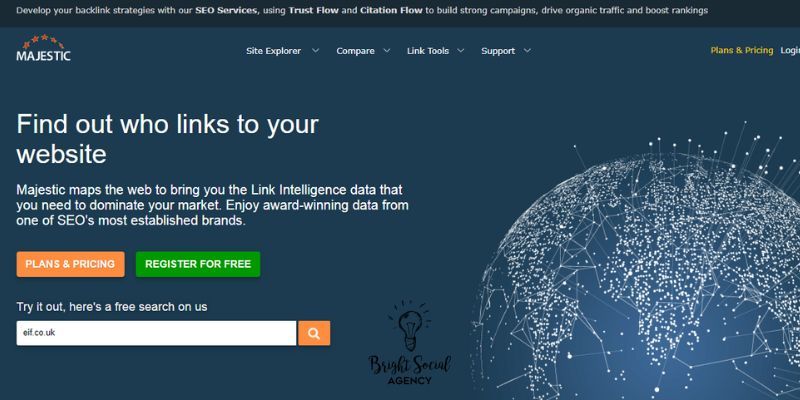
Majestic Lite is a link analyzer. It crawls the internet and stores information about every link it finds.
This information can create backlinks, monitor competitor links, find new niche markets and more.
Majestic Lite is a free version of Majestic SEO's link intelligence software. It helps you visualize and analyze your site's links, uncover new opportunities and help to optimize your content.
It also provides an estimate of the quality of the links pointing to your site, based on data from over 100 million websites.
The Lite version is limited to
500 domains per month. Still, this limit can be increased to 1,000 domains per month by donating or upgrading to the professional version of Majestic SEO.
The Lite version also only contains data from backlinks found in the
first 100 pages of search results on Google, Bing and Yahoo!. This restriction can be removed by upgrading to the paid versions of Majestic SEO or by using other tools that crawl deep enough into search results pages to find all backlinks of a given domain.
5. Hunter.io
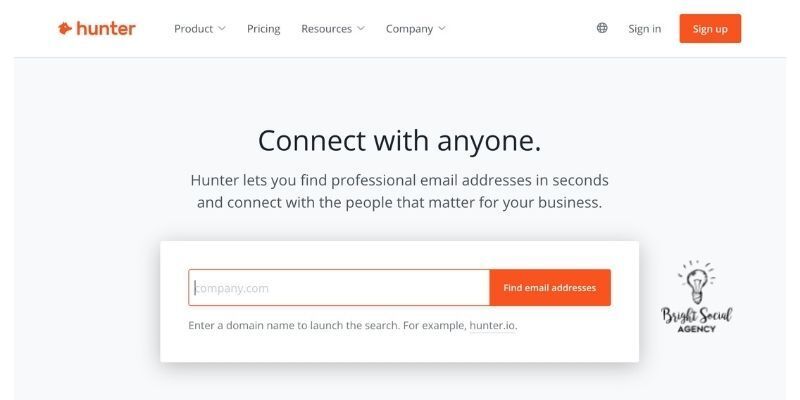
Hunter.io is an online platform helps you find email addresses for future opportunities.
You can use Hunter.io to help you find the email address of anyone in your industry at any level of your organization. Whether you're looking for a specific prospect or just want to access a broader pool of potential candidates, Hunter.io will make it easy to find email addresses with just a few clicks.
Hunter.io is an
incredibly simple tool
that allows you to access every contact in your company's database—no matter where it is stored—in one place. Depending on what technology works best for your organisation's needs, you can use it on its own or integrate it with other tools like
Salesforce and
MailChimp.
Using Hunter.io is easy: just enter the person's name or company name and click "Search." You'll instantly get results that include the person's LinkedIn profile and even their contact information if available! You can also search by industry using our Category search feature if you know what industry your target person works in.
Using a Chrome extension, you can simply click on the icon, which will return 10 email addresses for the domain you are viewing.
6. Custom Search Engine Queries
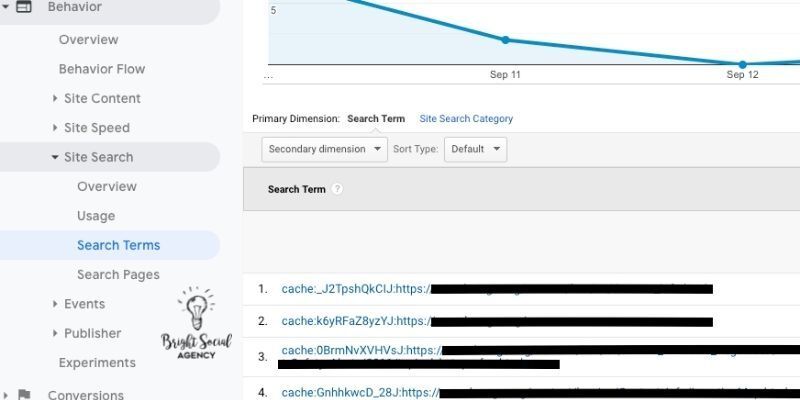
If you're looking for an online platform to help you scale your link-building efforts, look no further than Using Search Engine Queries. This tool will help you find qualified potential partnerships for guest post contributions.
Search queries are one of my favorite tools to use when link building. Although Google search is not a tool, it can be used as a resource by anyone looking to build links.
7. Ahrefs Backlink Checker
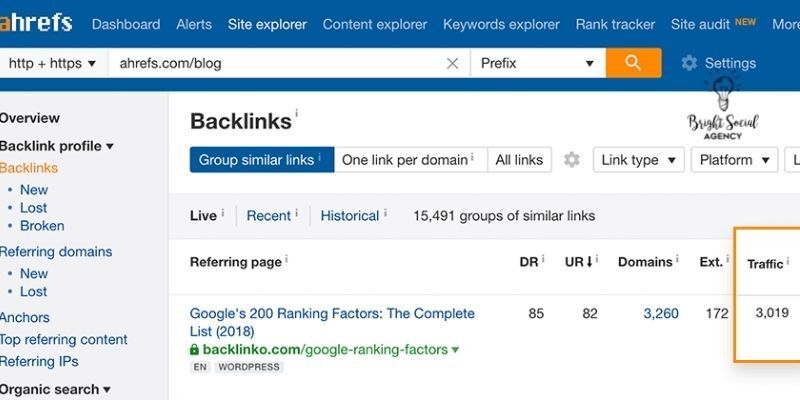
Ahrefs is the best backlink checker out there. It's been around for years and gets better every day. This tool is easy to use and gives you all the information you need to keep track of your backlinks and ensure that they're working for you.
The free version of Ahrefs has everything you need to get started:
a database of over 9 billion links, database management tools, and an index of all the backlinks you've ever built and all your competitors' links. You can use this information to find new link-building opportunities or monitor existing backlinks' performance.
The paid version unlocks even more features: competitor analysis tool, keyword research tool, rank tracking tool, social monitoring tool (for
Instagram & Pinterest), and content analysis tool (for
YouTube & Facebook).
8. HARO

HARO is a tool that finds possible backlink opportunities from publications and journalists who need feedback from subject matter experts.
It helps you to get exposure for your business or website by providing you with the opportunity to be featured in news
stories, blogs, magazines, radio shows and more.
FREE SOCIAL MEDIA TOOLS

1. Canva

Canva is an online tool for creating professional-looking graphics, and it's free! You can use Canva for everything from social media posts to blog graphics.
Canva is
super easy to use: just sign up for an account, select the size you want your image to be, and choose from some pre-made templates. Then you can add text, images, borders and shadows to make your picture look exactly the way you want it.
Whether you're a seasoned graphic designer or someone who's never designed anything before, Canva is the perfect place to get started.
With a wide variety of
templates, fonts and images, you can create everything from stunning social media posts to professional resumes without spending hours learning how to use complicated software.
With Canva, you can easily create any kind of design in minutes—no design experience required. Just choose an inspiring template in your favorite style, add photos and text, and you're all set! And when you need more customization, Canva's powerful tools will help you make it happen.
2. Free Stock Photo Websites (For Commercial Use)

There are a ton of free stock photo websites, but not all of them allow you to use their photos for commercial purposes. Here are some good ones that do:
- Creative Commons (CC image search)
- Pixabay
- Pexels
- Unsplash
Some of these resources are labeled for reuse and modification; others are not. Make sure to read the usage rights before using any resource and give proper credit when required.
3. Buffer

A buffer is a tool that works by first connecting your chosen profile(s) from each of the major social media networks. It allows you to schedule posts to share content at optimal times for audience engagement.
The key to Buffer's efficacy is its ability to
integrate with other tools and platforms, such as Google Analytics and Facebook Ads Manager. This makes it easy for marketers to track their progress, see what content works best, and optimize accordingly.
It is a useful for people just getting started in online marketing because it provides a perfect way to schedule posts ahead of time so that they don't have to worry about forgetting about them when they're busy with other things!

Content Studio is a content management system that allows you to manage your website and all its contents in one place.
Content Studio works with WordPress, Joomla, Drupal and other CMSs. It provides you with an intuitive interface to manage your website's content, and it allows you to set up automated processes for generating new pages, posts or blog posts. Additionally, it comes with an integrated image gallery builder that allows you to create photo galleries without having to leave the Content Studio interface.
You can also use Content Studio to create landing pages for your business or organization, so you can easily update them with new information as needed. You'll love how easy it is to create new landing pages using our Drag & Drop Builder!
5. Hootsuite
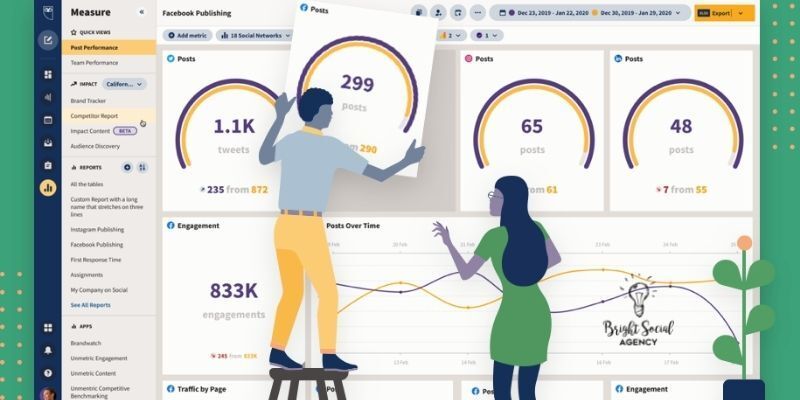
Hootsuite is an online social media tool that allows you to manage all your social media accounts in one place. It also gives you analytics, scheduling, and team collaboration tools crucial to running a successful business.
Hootsuite integrates with over 35 social media networks, so you can update all of your platforms with the click of a button. You can schedule posts in advance and monitor conversations to get an idea of what's working (and what isn't).
Hootsuite also lets you
share content from your favorite websites
and blogs directly into a post or tweet, which means less time spent creating content from scratch and more time doing what matters most: engaging with customers!
6. Facebook Audience Insights
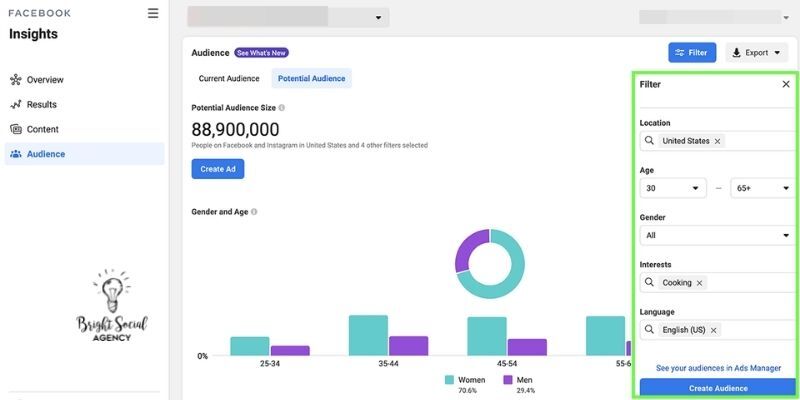
Facebook Audience Insights is an online tool to gain insight into the audience for more than just the Facebook platform.
It's easy to use and free, so you can use it whenever you need to. You can also export the data if you want to keep it around for future reference.
You can find out where your target audience is coming from, what other websites they frequently visit, and even information about their age and gender.
This information will
allow you to optimize your campaign
to appeal to your target audience.
Using this tool, you can find out where they live and what they like to do in their free time. You can also learn about their demographics, such as
age range, gender, and education level. This information will help you determine exactly who you need to target with your marketing campaigns so that you can reach them at home on social media channels like Facebook or Instagram.
7. Facebook Text Overlay Tool

Facebook Text Overlay Tool is a tool that takes the guesswork out for you so you can test your ad creative compatibility before ever uploading the ad and having it be disapproved.
With this tool, you can try out
words, phrases and sentences in any language
to see how they'll look on Facebook ads. You can also test out different
fonts and colors. It's like having your own little design team at your disposal!
You can upload your graphic if you want to see how it looks with text overlay on top—and we all know how important that is in getting people to click on an ad!
8. Social Media Message Optimizer

The Social Media Message Optimizer (SMMO) is a tool from Coschedule that helps you modify your posts so that your social media efforts do not go to waste by increasing engagement and trust with your audience.
You can also
enhance the performance of your content by up to 25% using SMMO. Without it, you’re likely wasting time and money on low-performing posts.
9. TweetDeck
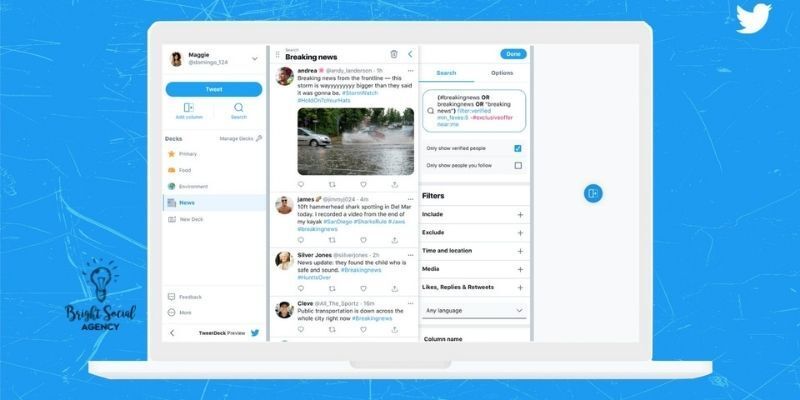
If you're looking for an online platform that will help you manage, monitor, and optimize your Twitter accounts, then look no further than TweetDeck.
TweetDeck is a free tool that allows you to run multiple Twitter accounts from one interface. You can set up various timeline views/streams in a single interface, making it easy to see what's happening with each account at a glance.
It's easy to use,
the interface is intuitive, and it allows me to see my Twitter accounts in one place so I can monitor them more efficiently.
FREE EMAIL MARKETING TOOLS

1. MailChimp

MailChimp is a great way to send out email newsletters. It's easy to use and has tons of features, but the best part is that it's free to use! You can use MailChimp to send email newsletters with images, embedded video and audio files, and even social media sharing buttons.
In addition to its great features, MailChimp also offers some really cool tools for tracking how many people open your emails and tick on links inside them. This helps you figure out what content works best in your newsletters to make them more effective.
MailChimp's powerful features and integrations help you design beautiful emails, send them to your subscribers, and measure the results.
- Use our drag-and-drop editor to create beautiful newsletters that look great across all devices. Or send a campaign from scratch in just a few clicks with our pre-made templates.
- Automate your email campaigns so they run on your schedule, not yours. Create automated workflows to keep your subscribers engaged with timely updates and welcome series that lead up to a big announcement like an upcoming event or product launch.
- A/B test subject lines and content variations to see which emails perform best for your audience. Send more targeted campaigns by looking at what content people engage most with in their inboxes.
- Track how well your campaigns perform so you know what works for your audience and what doesn't — then use those insights to make future campaigns even better!
This plan offers
2,000 contacts and 10,000 sends per month. It allows you to create one automated sequence, but you can “test out” different options or triggers by deleting the automated sequence and creating another one.
2. MailerLite
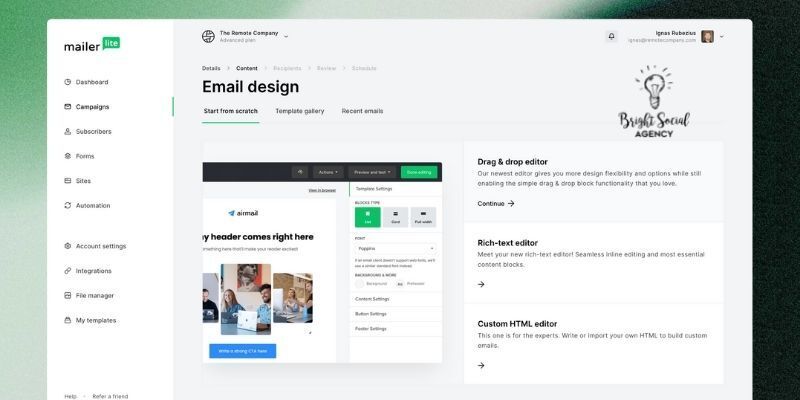
MailerLite is a powerful online email marketing software that helps you send newsletters, email blasts and bulk emails. With MailerLite, you can create and send newsletters, email blasts and bulk emails with ease. It's the perfect tool for small businesses and nonprofit organizations.
In addition to being free, MailerLite is extremely
easy to use. It has a drag-and-drop interface, so building professional-looking emails is a breeze. There are no difficult settings to mess with or confusing code to learn. Just start writing your message and move it around until it looks perfect.
MailerLite also comes with a built-in newsletter editor that allows you to easily add images, videos, audio files and links into your newsletter template without having to worry about how they will look when they're sent out in HTML format.
MailerLite offers extensive personalization features, including
A/B testing and conditional content based on user actions such as opening an email or ticking on a link within it.
MailerLite offers a number of different plans, including free accounts for up to 1,000 subscribers. For all plans, you can send up to 12 campaigns per month, with an unlimited number of subscribers per campaign.
MailerLite offers a free trial period so you can see if it's right for your business before committing. The paid tiers begin at
$9/month for up to 5,000 subscribers
and increase from there based on subscriber count.
3. Email Subject Line Tester

Email Subject Line Tester is a free online tool that will help you test different subject lines for your emails to see which one gets the best open rate.
This is a simple and useful tool if you are sending out emails regularly but want to enhance the open rate of your messages. It can be used by anyone who needs fast results, including marketers, bloggers, business owners and more.
This free web app will help you
find the most effective subject line for your emails. We'll analyze your list and send out multiple variations of each subject line to see which ones get the best response rate.
You can also upload your list and use our optimization algorithm to find the best subject line for it.
Email Subject Line Tester allows you to test different subject lines against one another and see how they perform based on metrics such as click-through rate, unsubscribe rate and more.
FREE LEAD GENERATION TOOLS

1. SUMO
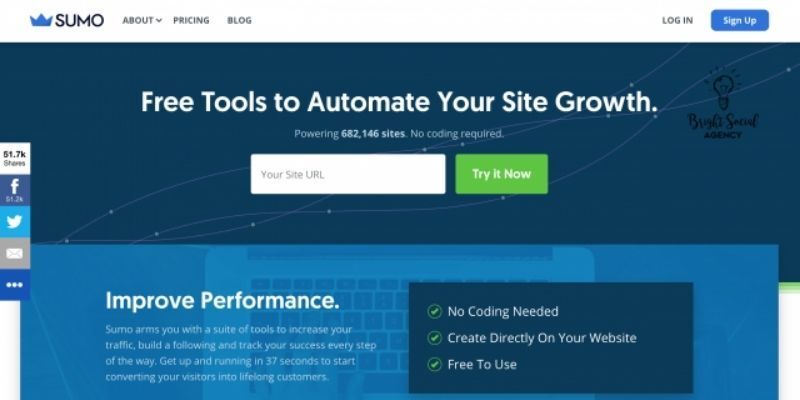
SUMO is a tool that helps build your email list. It's an extension for your browser that lets you add content blocks to your site, just like you would with a blog post or page. You can also use SUMO to bring in new visitors and convert them into subscribers (or customers).
With SUMO, you can:
- Add content blocks to your site that drive traffic and conversions.
- Get more email subscribers by adding lead magnets, forms and other CTAs to your website.
- Find out what type of content works perfectly on your site with heat maps, scroll maps and analytics tools.
The SUMO extension adds a popup window to every page of your website. When someone visits one of these pages, they will be prompted with a question, and they have the option of answering it or not.
Once they answer it, they will receive an email which includes a link back to your website, where they can learn more information about what they've just answered. The more people click on the links in their emails, the more traffic comes back to your site.
You can use SUMO to help build your email list by adding subscribe boxes on your website. The subscribe box adds a form where visitors can enter their name and email address in exchange for something of value.
SUMO also has an analytics dashboard that allows you to see how many subscribers are coming from each channel (e.g., social media), what percentage of those users are engaged with your content, and more.
2. Hellobar

Hellobar is a lead gen tool that allows you to integrate different popup and lead gen styles onto your site. It is a great solution to get people's attention, grow your email list, and increase sales.
It has ready-made templates for many of the most popular email marketing platforms such as
Aweber, MailChimp, ConvertKit, Infusionsoft
and more. But don't worry if you use something else — we also have an easy-to-use editor where you can create your custom templates.
Hellobar is highly customizable and supports custom CSS stylesheets, so if you want to change the look of it or integrate it with another theme/plugin, that's no problem!
Hellobar supports multiple popups, including:
- Welcome screen: Show a welcome message to new visitors, or offer them a discount in exchange for their email address.
- Newsletter subscription box: Convert more visitors into subscribers by showing them an easy way to subscribe to your newsletter on the same page where they're already reading content from your blog.
- Subscribe to blog updates box: Show an easy way for readers who don't want to subscribe to your newsletter but still want updates from you on Twitter, Facebook, or other social networks.
- Website stats box. Display current traffic stats for your website in a popup so that visitors can see how popular it is with their peers (or just curious about what kind of traffic you're getting).
Free Project Management Software

1. ClickUp
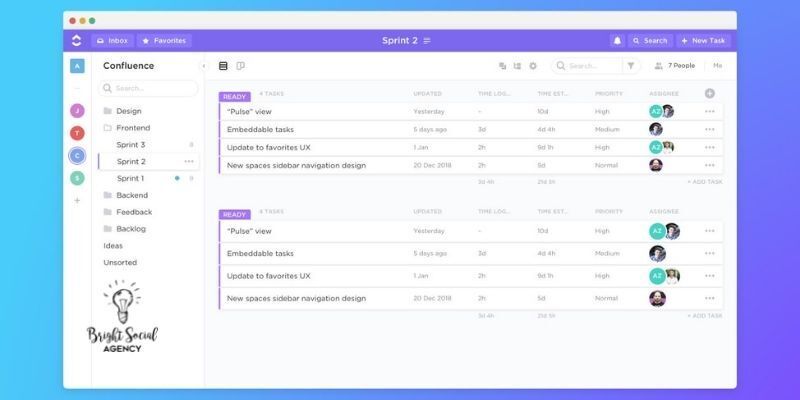
ClickUp is a free online task management tool that helps you organize, prioritize and assign tasks to your team.
If you are a manager looking for a task management tool, ClickUp will help you manage projects from start to finish.
If you are searching for an easy way to manage multiple projects, ClickUp has the features you need in a single app.
And if you're a freelancer working with clients on different projects, ClickUp will help keep your projects organized and make it easier for clients to communicate with each other when needed.
There are two main features of ClickUp. The first is the
project management tool, which lets you create projects, add tasks to those projects, assign those tasks to users, set due dates and track progress on each task.
The second is the "minutes" feature, which allows you to record meeting minutes without typing them out by hand.
The project management tool is great for managing projects of any kind — whether managing a team of writers or planning your family reunion.
It's also useful for
keeping track of personal projects like household chores or organizing your wedding events.
2. Nifty
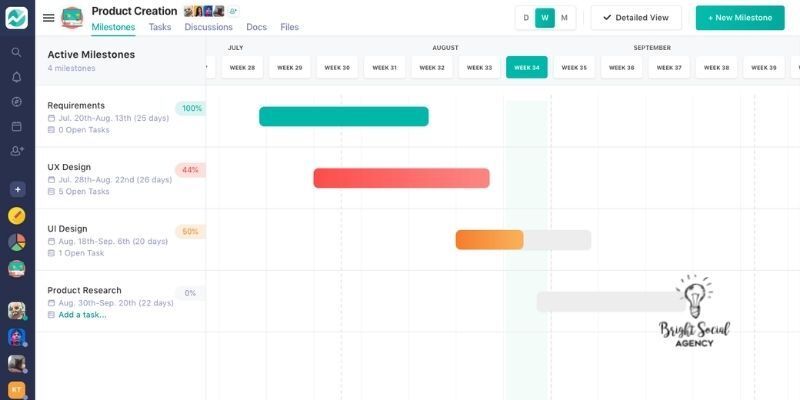
Nifty is an online project management tool that lets you plan and manage your projects online. It's designed to help you get things done, whether planning a wedding, organizing a book club meeting or building a house.
With Nifty, you can:
- Create your goal and share them with friends and family.
- Add due dates, tags and comments to each task.
- See your tasks grouped by date or tag at a glance in the sidebar.
- Get reminders via email or text when tasks are due.
Nifty is a web-based application that provides all of the features you need to manage your team's projects and tasks. You can create tasks, assign them to team members, set due dates and create reports to show how things are progressing.
Nifty uses a
Kanban board concept where you create tasks in columns based on priority. The columns can be moved from one column to another based on the stage of completion of each task.
The software lets you add notes directly onto each task as well as attachments so you can upload files related to specific tasks.
3. Trello
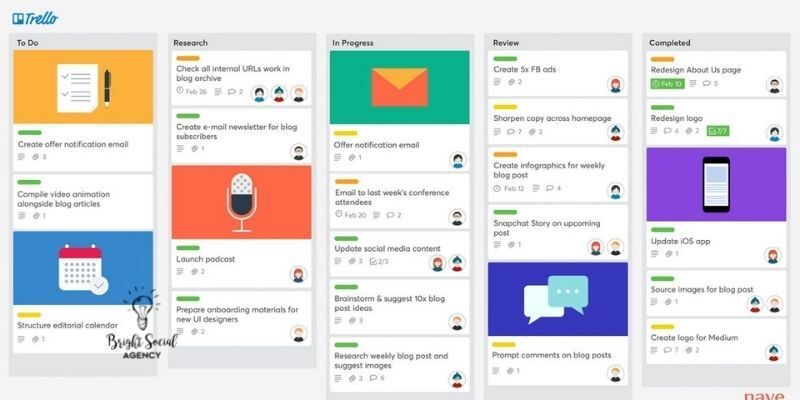
Trello is an online, free, flexible and visual way to organize anything with anyone.
Trello is a collaboration tool that organizes your projects into boards. In one glance, Trello tells you what's being worked on, who's working on what, and where something is in a process.
Trello makes it easy for you to get organized and collaborate with others. Build better teams by setting goals and keeping members accountable.
With Trello's simple interface, you can drag and drop cards from list to list with ease. It's perfect for organizing projects, planning events or managing your life.
Trello has three main functions:
- Create boards for organizing tasks. Create lists on each board to organize your tasks. Assign cards to specific lists or add them to existing cards on other lists, as needed.
- Use checklists to track progress on each task, or add comments and attach files as needed. You can even use "sticky notes" to keep track of things that don't fit into the traditional Trello model of lists and cards — just like you would on a physical corkboard!
- Add labels to your boards and lists so you can easily find what you're looking for later on (I tend to use labels like "in progress," "done," and "waiting").
You can also see what needs to be do and who's responsible for each item on the board. It's also a good way to collaborate with others on projects because you can share different boards with different people.
4. Bitrix24
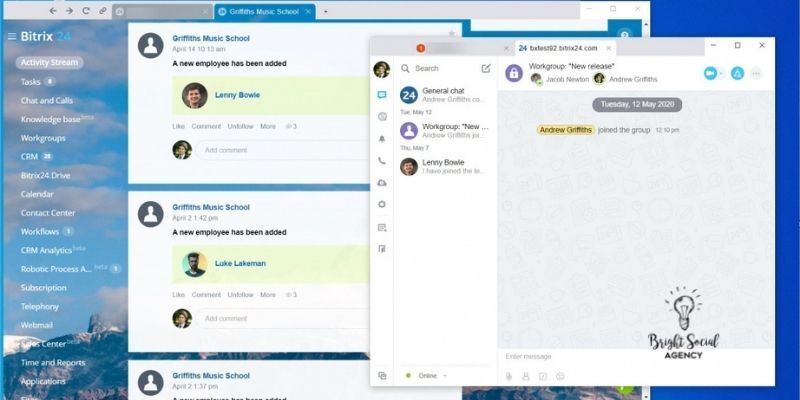
Bitrix24 is a corporate social network and a business collaboration platform. It offers a secure, reliable and fast communication channel for employees, partners and customers. Bitrix24 is compatible with Microsoft Office 365, Google Docs and other productivity software.
Bitrix24 can be used to connect employees within one organization or to partner companies across multiple locations. The platform enables users to collaborate on documents, share data and communicate via instant messaging, video conferencing and conference calls.
Bitrix24 also allows
teams to manage their schedules, share calendars, create task lists and track projects in real-time.
Bitrix24 offers several modules to help you manage your business. For example, the CRM module helps you track leads and contacts, while the Project Management module gives you control over projects and tasks. You can use the Calendar module to schedule meetings and events or send emails via the Mailer module.
The Social Networking module lets you promote your business on
Facebook and Twitter, while the Newsfeeds module shows users' activity on social networks like
LinkedIn or
Google+.
Bitrix24 has everything you need to run your business. Its powerful project management system lets you create multiple projects with subprojects and organize them with folders, milestones and tags.
You can also assign jobs to your team members, share files with clients and set due dates for each task. You can even create separate projects inside projects so that you can keep track of different stages of development or launch events.
5. Asana

Asana is a beautiful and powerful tool for managing your tasks and projects. It helps you visualize your work, focus on what's important and stay organized.
Asana is where your team's work comes together—so you can do more of it. Asana helps teams get stuff done. It combines
the power of workflow, organization, planning and communication tools
with the simplicity of a social network.
Asana is an online cloud-based task management platform that helps teams manage their workflow from start to finish, including creating tasks, assigning them to team members, tracking their progress, discussing them in real-time, and reporting on results.
Asana helps you get your work done by breaking it down into smaller tasks, which makes it easy to assign, organize and prioritize everything on your plate. You'll be more productive and efficient when you use Asana to stay organized while collaborating with others.
In Asana, you can easily create a task list, add details, assign it to someone else or schedule it in the future. You can also
attach documents, photos, or files related to your tasks.
When everyone on your team uses Asana, everyone knows what's going on — there are no vague emails or unanswered questions about what needs to be done next.
6. Todoist
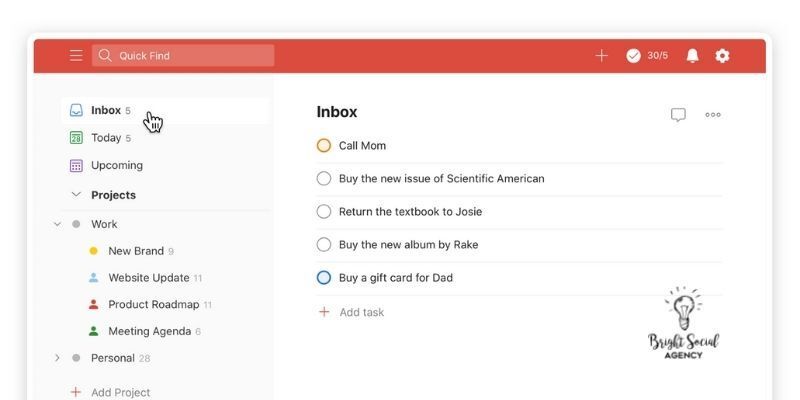
Todoist is a task management service that helps you organize your life, whether it's managing your to-do list, planning projects or sharing tasks with co-workers.
Todoist has been featured in
The New York Times, TIME Magazine, CNET, Mashable
and more. It's also the top-rated to-do list app in Google Play and
App Store.
Use Todoist on the web and across all your devices to stay on top of tasks. Create tasks quickly by adding them right from Gmail or Google Calendar emails. Set reminders, so you don't forget important deadlines. Manage shared tasks with collaborators using Todoist for
Android, iOS, Mac & other platforms.
The app has three main views:
My Tasks, Today and Projects. The My Tasks view shows all of your tasks, organized by date or priority level. I like that you can also see incomplete tasks at the top of this view — it makes checking off items much more satisfying. The Today view shows a list of your tasks for the day, as well as weather conditions and calendar appointments.
7. TeamGantt
5. Asana
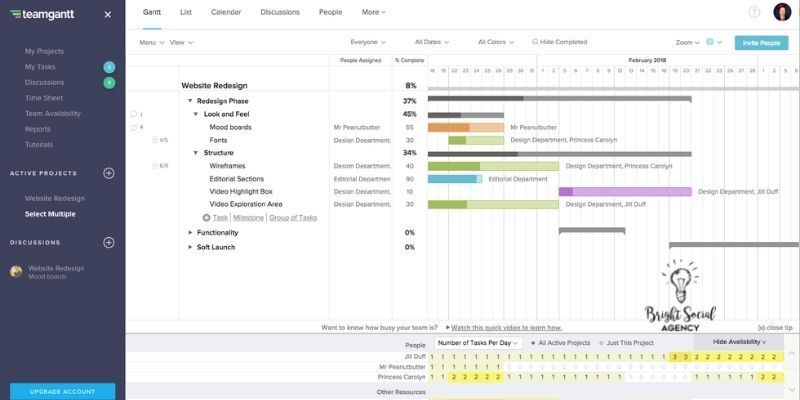
TeamGantt is a simple yet powerful project management software solution that allows you to create, view and share Gantt charts online. With TeamGantt, you can:
- Create beautiful Gantt Charts in just a few minutes
- Share your projects with your team members and clients
- Collaborate on projects with other users
- Track your time from anywhere using our mobile apps (iOS and Android)
TeamGantt offers two different plans:
a Free Plan, which is limited to one project per user, and a Premium Plan, which includes unlimited projects. The
Premium Plan also features additional features such as task dependencies, critical path analysis, etc.
TeamGantt offers
a variety of templates for common project types like 'sprints', 'roadmaps' and 'agile' projects. You can create your custom templates or start from scratch with a blank canvas.
TeamGantt is completely customizable. You can set up different roles with different permissions, customize your Gantt chart with an unlimited number of tasks, resources and dependencies, add comments to tasks, assign tasks to team members and more!
8. Zoho Projects
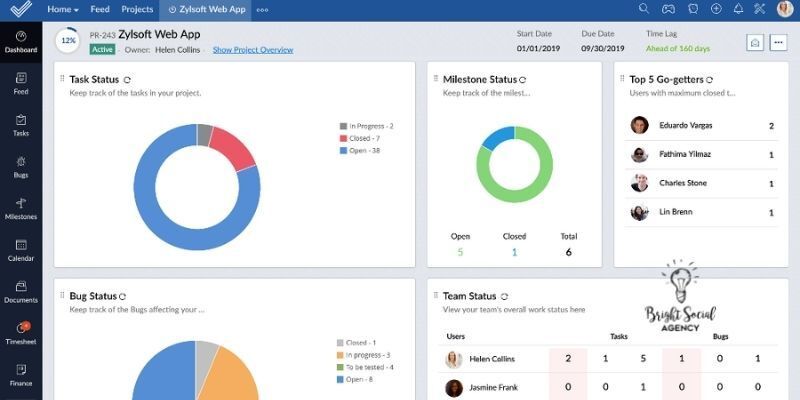
Zoho Projects is an online project management tool for small businesses and teams. It provides visibility into projects, tasks, deadlines, and milestones.
It has various features that can be used to manage your team's workload. You can keep track of tasks and dependencies, deadlines and progress, resource allocation and more. It also allows you to assign tasks to your employees and measure their performance through reports.
The dashboard of Zoho provides you with a
quick overview of all projects with due dates, budget breakdowns and performance reports.
Features of Zoho Projects:
- Easy Team Collaboration - Manage your team’s workload by creating projects, assigning tasks to members and tracking their progress through reports.
- Innovative Workflow Management - Create workflows for every step in your project management process so that every task is completed on time.
- Easy Project Management - Manage multiple projects at once with an intuitive dashboard that provides a bird’s-eye view of all aspects of each project, such as budgets and timelines.
You can also create issues, deal with incidents, and resolve problems so that you can manage your project from beginning to end.
Zoho Projects offers an
easy-to-use interface that makes project management simple for both newbies as well as experienced managers.
Free Video Marketing Tools

1. Content Idea Generator, by Portent

Content Idea Generator by Portent is the only tool of its kind on the market today. It uses AI algorithms to analyze your past content and generate ideas based on what's worked best for your audience. The results are always unique and fresh, so you'll never have to worry about running out of topics again!
This tool is designed to help you come up with fresh ideas for your next piece of content and help you avoid the dreaded "writer's block." It uses a combination of algorithms and human editors to create a list of potential topics that are likely to resonate with your online audience. All you have to do is select one and start writing!
2. Storyboarder, by WonderUnit

Storyboarder by WonderUnit, is a tool that helps you create storyboards for animation.
Storyboards are crucial in producing any
animated film, TV show, or video game. They allow animators to visualize their ideas and communicate them to other production team members. A well-drawn storyboard can also be used to pitch your project to investors and distributors.
WonderUnit created Storyboarder because we wanted an easy way to create high-quality storyboards without having to deal with the complexity of traditional software like
Photoshop or Illustrator. Their goal was to make it easy for anyone with no art experience to create professional-looking storyboards using their iPad or iPhone!
3. Script Timer, by Vidyard
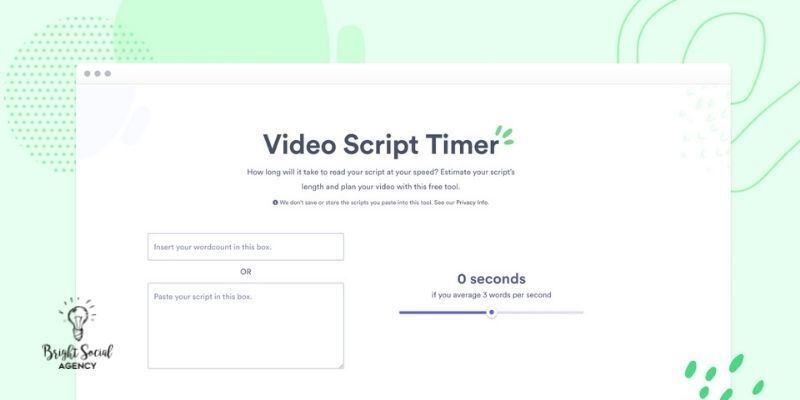
Script Timer, by Vidyard is a free tool that makes it easy to track the time you spend on scripts.
Script Timer, by Vidyard helps you:
- Keep track of your spent time on each script.
- Know which scripts are taking up the most of your time.
- Plan out what you need to do next, based on how much time you've already spent on each script.
It lets you record your screen as you work on a presentation, so you can see how long each slide takes to read aloud. After that, You can use the data gathered to tweak your presentation and improve the flow.
If you're working with text slides, this tool will also allow you to see how fast or slow your audience reads them when watching the video.
It's
easy to use and works seamlessly with Vidyard's video editor, so you can focus on creating great content and not worry about keeping track of how long each scene is taking.
4. Adobe Premiere Rush

Adobe Premiere Rush is an online tool for those who need an easy-to-use video editing app that can help them make short videos but don't have much time to learn how to use it. This tool is easy to use that even your kids can use it!
It has a simple interface that makes it easy to get started. You can also select from numerous templates to get started with your project. The templates will give you a solid foundation for your video, but they're also flexible enough that you can customize them if you want.
You'll also be able to easily add music and text to your videos and apply
filters and transitions. There are even some special effects available if you'd like them!
If you're looking for something more advanced, Adobe Premiere Rush might not be your best choice. However, if you need a
quick way to edit your videos without spending days learning how everything works, this will probably work great!
5. Headline Analyzer

Headline Analyzer is a free platform by CoSchedule that helps you analyze your headlines to see what’s working and isn’t.
With Headline Analyzer, you can:
- See how your headline stacks up against 28 industry benchmarks in terms of social reach, engagement and more.
- Get suggestions on how to improve your headline.
- Try different combinations of words to see which ones work best for your audience.
In one sentence, it tells you what words to use to get more clicks from
Google Search, Facebook Ads and Twitter Ads.
The tool analyzes your headline and gives tips on how to improve it. It also lets you see which words in your headline will most likely get clicks on each social network.
The Headline Analyzer uses an algorithm to analyze your headline and give it a score based on how likely it is to engage readers. You can also see how it compares to other headlines from the same content category.
The extension has three main features:
- Word Count - This feature automatically tallies the number of characters in your headline. It does not count spaces, punctuation, or capital letters.
- Readability - This feature automatically calculates the readability of your headline based on Flesch-Kincaid grade level and Flesch Reading Ease score. The higher the grade level or reading ease score, the more difficult it will be for readers to understand what you're saying in your headline.
- Common Content Writing Mistakes - This feature looks at commonly confused words (there, they're) and common content writing mistakes (using 'is' instead of 'are').
Free Pinterest Keyword Tools

1. Pin Inspector
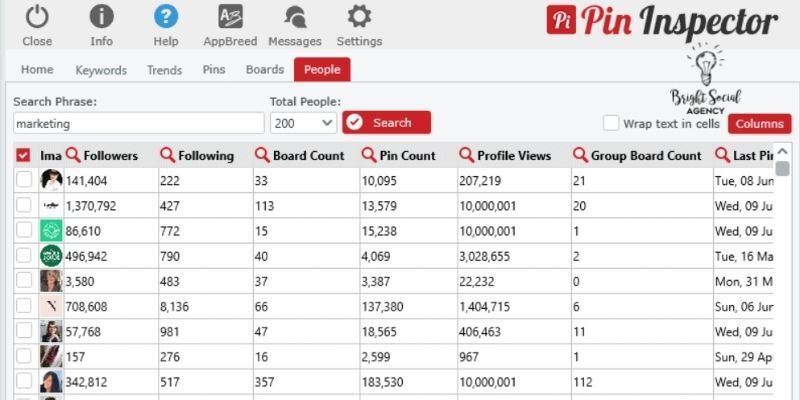
Pin Inspector is a new, innovative, and one-of-a-kind Pinterest tool that has revolutionized Pinterest keyword research!
With Pin Inspector you can:
- Discover the most relevant Pins in any category or niche.
- Find out your Pins that are getting repinned the most.
- Find out who's repinning your Pins and what they're pinning.
Pin Inspector will help you find untapped keywords that you can use to drive traffic to your website or blog. You can also use these keywords in your Pins and boards on Pinterest to get more followers and increase sales.
Pin Inspector will help you
find the keywords that matter for your business so that you can create more engaging content and
increase traffic on your blog.
2. KeySearch
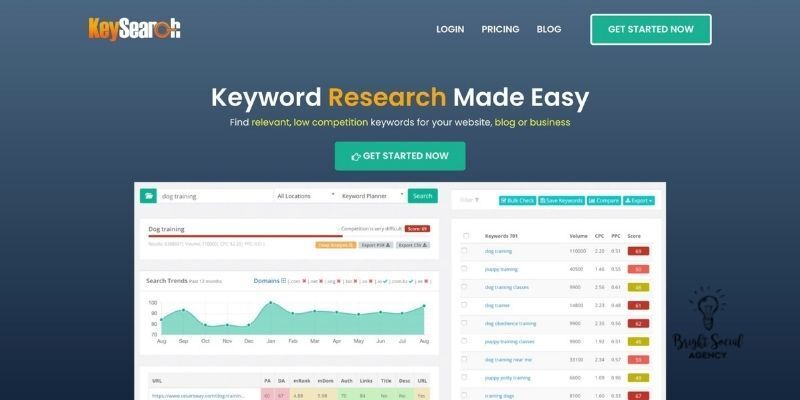
KeySearch is a free Pinterest keyword tool where you can see a variety of keywords and their search volumes!
KeySearch is the easiest way to discover new ways to grow your Pinterest account. As soon as you enter a keyword, KeySearch will show you:
- The top related keywords that people are searching for on Pinterest.
- How many people are searching for each one of these keywords (the search volume)
- A graph that shows how the popularity of each keyword has changed over time (the trend)
- You can use KeySearch to find new topics to pin about, or simply get inspiration for an existing board.
KeySearch gives you the ability to find popular keywords on Pinterest. This tool can help you gain more followers, traffic, and sales. You can also use KeySearch to find topics related to your niche so you can expand your audience!
KeySearch also has a ton of other features that you can use to help grow your Pinterest profile. For example, you can find out how many people are searching for your brand name, which keywords are being used with your brand name, and more!
KeySearch reveals the most relevant search terms for your boards and pins so that you can optimize them accordingly.
3. Pinterest’s built-in keyword tool
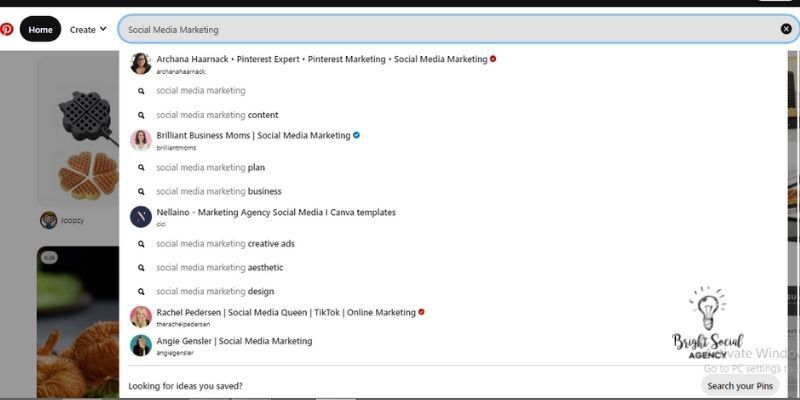
Pinterest’s built-in keyword tool is one of the most powerful tools you can use to discover new content ideas for your account.
As you browse through Pinterest, you may have noticed that there are grey dots on certain pins. This is the result of someone using the Keyword Insights tool.
Keyword Insights is a free tool that allows you to see how many people are searching for a specific term on Pinterest, how often it’s searched and what types of pins are popular among those searches.
This tool is useful for
finding keywords that are relevant to your business or industry, but also for finding new ideas for content and inspiration for your brand. Let’s take a look at how you can use this feature to get more out of Pinterest marketing!
Pinterest uses an algorithm to determine what people search for on their platform and how those searches relate to each other. This means that if someone searches “paleo diet recipes”, they may also be interested in “gluten free recipes” or “healthy eating tips”.
The Pinterest keyword tool works by analyzing your content and identifying words that people have used to find it. You can then use this information to find new ideas for things you could be pinning about.
Free Hashtag Generator Tools

1. All Hashtag

All Hashtag is a tool that lets you find relevant hashtags for your Instagram posts and other social media content.
All Hashtag makes it easy for you to
find the perfect hashtags for your photos and videos by providing you with a list of trending tags and suggestions based on what your followers are using.
All Hashtag allows you to search for any hashtag on Instagram, as well as other social platforms like Twitter and Facebook. You can filter by
category or location in order to narrow down your search.
The app allows you to add custom hashtags to your posts and monitor the performance of your campaign in real-time.
All Hashtag also offers advanced analytics that helps you understand how people are reacting to your marketing efforts.
2. Ritetag
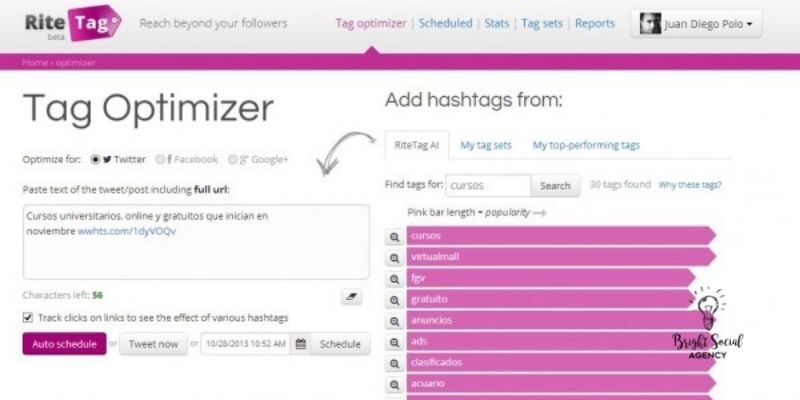
Ritetag is a chatbot that gives instant hashtag suggestions for images and texts on desktop and mobile, based on real-time hashtag engagement.
It was created to solve the problem of finding relevant hashtags for social media posts. The idea is simple: you insert a text or an image into our bot, and it will return a list of related hashtags to use in your social media post.
The algorithm behind Ritetag is designed to
generate the most relevant hashtags, so that you can use them to grow your audience and increase your visibility in social media.
It's free to use and there are no limits on how many hashtags you can add to your content.
Ritetag is available as a
desktop app or as a mobile app. If you're using it on desktop, you can open up an image file or paste text into Ritetag's window to get instant suggestions for the best hashtags to use. If you're using it on mobile, simply enter any text into Ritetag's search bar and it'll give you suggestions based on what other users have used in their posts.
Ritetag also allows
you to search for keywords related to your business or industry so that you can find appropriate hashtags for your posts.
3. Instavast Hashtag Generator
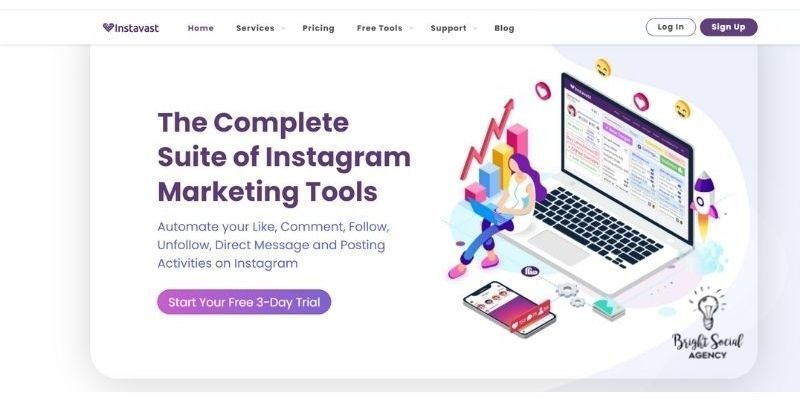
Instavast hashtag generator is a tool to help you create the best hashtags for your Instagram posts. Use the Hashtag Generator to find the best hashtags for your next Instagram post and increase the reach of your content.
Instavast Hashtag Generator is the only free tool that allows you to search hashtags on Instagram and see if they are relevant or not. This is crucial, because you want to know if people are actually using your hashtag before you start promoting it.
You simply enter a keyword and click "Generate".
Instavast will then generate relevant hashtags
for you to use in your posts. You can also sort the hashtags by popularity, recency or alphabetical order.
4. #HashMe

HashMe allows you to upload a photo, or search hashtags with text input.
HashMe is the first app that lets you search through hashtags on
Instagram, Twitter, YouTube and Flickr. You can search for any hashtag or username in the world.
The app also gives you a list of popular tags and related hashtags, so you can find new people to follow or photos to like.
5. Hashtagify

Hashtagify is a tool to find the most popular hashtags.
Hashtagify is a tool that
helps you find what's trending on Twitter by showing you the top tweets
and finding the most popular hashtags related to them.
The app also shows you which hashtags are being used most often by your followers, friends or family members. This can help you discover new people to follow based on similar interests or topics that are important to you.
On the Hashtagify website, you can enter any keyword and see how many times it has been used with different hashtags on
Twitter and Instagram. You can see which hashtags are most popular with each keyword, along with an analysis of how much traffic each hashtag brings in.
This is great if you want to learn more about social media marketing trends or find out which hashtags are popular among your target audience.
6. HashtagsForLikes
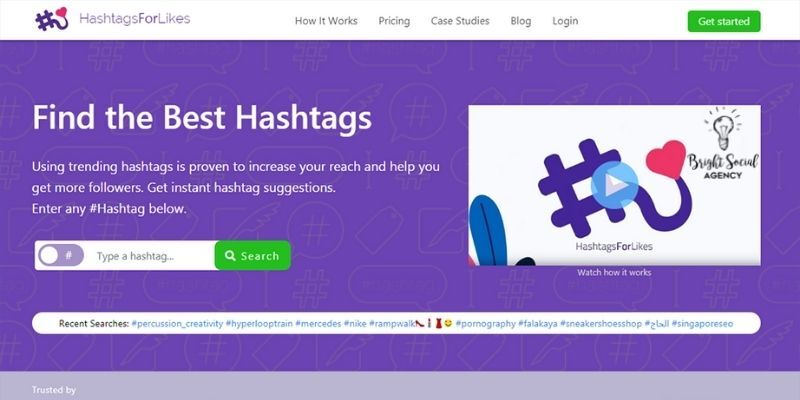
HashtagsForLikes is a tool that allows you to create and share your own hashtags.
HashtagsForLikes is different from other hashtag tools because it creates a unique hashtag for each of your posts. This means that even if you use the same hashtags on multiple posts, they will be different.
HashtagsForLikes also has a unique feature where you can see how many people are using a hashtag before you use it. This is great because it prevents you from using an existing hashtag that already has hundreds or thousands of posts.
This tool is super easy to use and there are no limits on how many hashtags you can create at once!
The app will
give you a list of popular hashtags related to your post, as well as suggestions for more hashtags that you can add to your post.
You can also create a free account on HashtagsForLikes.com, which allows you to save the hashtags you've used in the past so that they are available whenever you want to use them again.
Final Verdict
The big question: Does it work? Yes, it does. This free marketing stack is an effective tool for small businesses or startups just starting out. In the past, implementing a marketing campaign might have required hiring companies to do this for you—but what if you didn't have the money to do that?
What if you wanted to take a DIY approach to your marketing?
This guide provides you with free online tools to get your online marketing started on the cheap.
This post may contain affiliate links, which means that we may receive a commission if you make a purchase using these links.










